 Search by Keyword
|
"THE END"
(John Lennon – Paul McCartney)
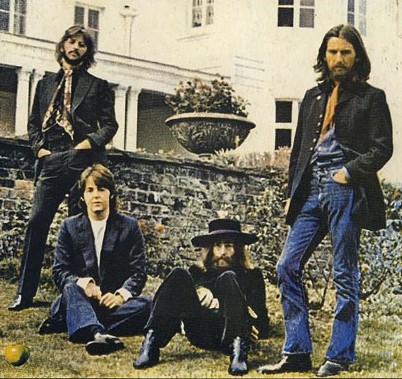 The Beatles song "The End," which ultimately ended up being the final proper track on their last recorded album "Abbey Road" (notwithstanding the suprise bonus track "Her Majesty") appears to commentators, authors and fans alike as the group's farewell message to the world. But was it really intended as such? The Beatles song "The End," which ultimately ended up being the final proper track on their last recorded album "Abbey Road" (notwithstanding the suprise bonus track "Her Majesty") appears to commentators, authors and fans alike as the group's farewell message to the world. But was it really intended as such?
In May of 1969, the idea was hatched to string together a good number of musical pieces, many of which being unfinished McCartney or Lennon songs, to form one long medley that would take up a full side of an album. As work on this progressed during the recording of the “Abbey Road” album, it was obvious that a suitable ending to the medley would be needed. By July 23rd, 1969, they began recording this final segment of the medley.
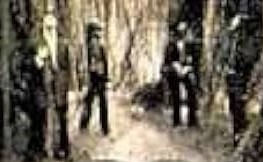 But documentation reveals that they didn't actually intend this final section of the medley to be any special farewell message to their fans. The very last time all four Beatles were in the recording studio together was on August 20th, 1969, the purpose of this session being to compile and band together the running order for the “Abbey Road” album. This extensive session in the control room of EMI Studio Two, which ran from 6 pm to 1:15 am the following morning, resulted, for the most part, in the order of the songs for the album as we know it. But documentation reveals that they didn't actually intend this final section of the medley to be any special farewell message to their fans. The very last time all four Beatles were in the recording studio together was on August 20th, 1969, the purpose of this session being to compile and band together the running order for the “Abbey Road” album. This extensive session in the control room of EMI Studio Two, which ran from 6 pm to 1:15 am the following morning, resulted, for the most part, in the order of the songs for the album as we know it.
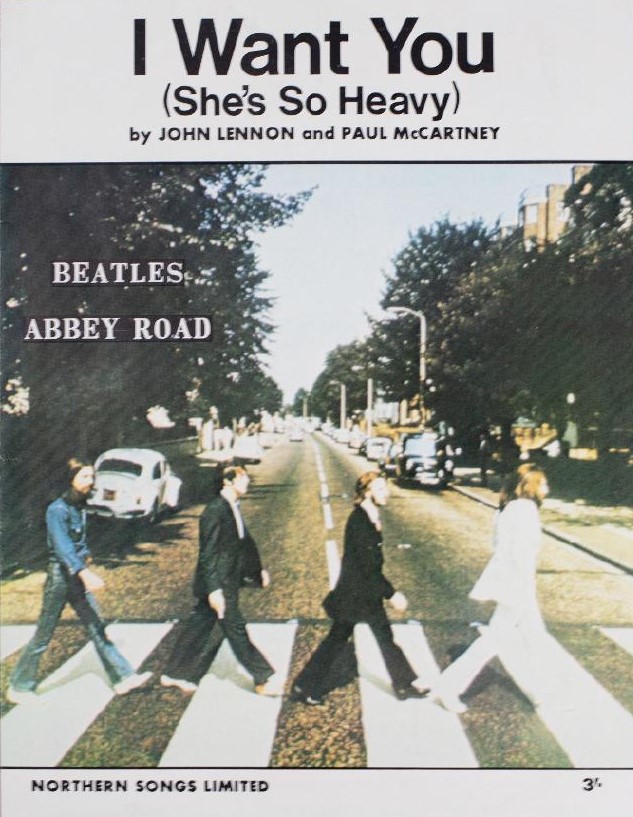 However, “side one” and “side two” were reversed! They intended the long medley, which ends with “The End,” to finish off “side one” of the album, while John's dramatic “I Want You (She's So Heavy)” would finish off “side two” and, thereby, be the final track on the final Beatles album. So, instead of Paul's philosophical last line in "The End" about “the love you take” being “equal to the love you make” being a final farewell message to their fans, it therefore becomes obvious that the intention was for it to just simply be a fitting ending to the medley. Of course, it's a much more romantic thought to assume The Beatles had a deeper and more profound intention for the song so, therefore, many fans will still prefer to think of it that way. God bless them for that! However, “side one” and “side two” were reversed! They intended the long medley, which ends with “The End,” to finish off “side one” of the album, while John's dramatic “I Want You (She's So Heavy)” would finish off “side two” and, thereby, be the final track on the final Beatles album. So, instead of Paul's philosophical last line in "The End" about “the love you take” being “equal to the love you make” being a final farewell message to their fans, it therefore becomes obvious that the intention was for it to just simply be a fitting ending to the medley. Of course, it's a much more romantic thought to assume The Beatles had a deeper and more profound intention for the song so, therefore, many fans will still prefer to think of it that way. God bless them for that!
Songwriting History
Having committed to writing, compiling and recording an extensive medley for the "Abbey Road" album, a suitable ending needed to be written. With the "Golden Slumbers / Carry That Weight" segment of the medley taking shape in the recording studio in early July, 1969, it was quickly surmised that this would segue into the closing piece of the project. Paul thought this through and, by late July, he had enough of an idea to bring a conclusion to the medley into the studio for The Beatles to record.
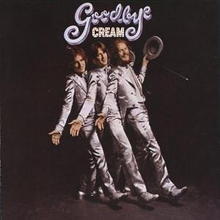 In the advent of what was to become the “Hard Rock” genre of the '70s, Paul decided that the medley's conclusion should have a heavy guitar sound. Following the late '60s trend, led by acts such as Jimi Hendrix, Cream, Mountain and Iron Butterfly, to cite just a few examples, The Beatles laid down an intricate and well-rehearsed distorted electric guitar instrumental on July 23rd, 1969. In the advent of what was to become the “Hard Rock” genre of the '70s, Paul decided that the medley's conclusion should have a heavy guitar sound. Following the late '60s trend, led by acts such as Jimi Hendrix, Cream, Mountain and Iron Butterfly, to cite just a few examples, The Beatles laid down an intricate and well-rehearsed distorted electric guitar instrumental on July 23rd, 1969.
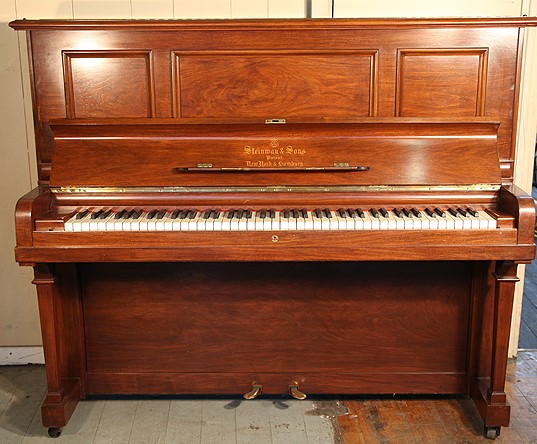 At first, this concluding segment of the medley, simply entitled “Ending” at this point, only lasted one minute and twenty seconds, concluding with a sudden stop. If you imagine the released recording dramatically ending just before Paul's subtle Steinway Vertegrand piano chords, this will give you an idea of what The Beatles originally had in mind to conclude the medley. Very quickly, though, Paul envisioned a more mature and thematic ending to the piece, which they tacked on to the end of the heavy-sounding recording they had made. At first, this concluding segment of the medley, simply entitled “Ending” at this point, only lasted one minute and twenty seconds, concluding with a sudden stop. If you imagine the released recording dramatically ending just before Paul's subtle Steinway Vertegrand piano chords, this will give you an idea of what The Beatles originally had in mind to conclude the medley. Very quickly, though, Paul envisioned a more mature and thematic ending to the piece, which they tacked on to the end of the heavy-sounding recording they had made.
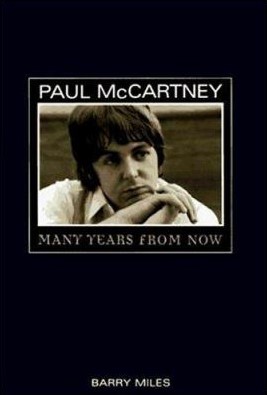 It wasn't until early August that Paul came up with one final lyrical idea to accompany the thematic conclusion to “The End.” Paul's book “Many Years From Now” states: “Shakespeare ended his acts with a rhyming couplet so that the audience would know they were over. I wanted it to end with a little meaningful couplet, so I followed the Bard and wrote a couplet.” John approved, as he stated in his 1980 Playboy interview: "It had a nice line in it – 'The love you take is equal to the love you make.' It was a very cosmic, philosophical line. It proves that if Paul wants to, he can think!" It wasn't until early August that Paul came up with one final lyrical idea to accompany the thematic conclusion to “The End.” Paul's book “Many Years From Now” states: “Shakespeare ended his acts with a rhyming couplet so that the audience would know they were over. I wanted it to end with a little meaningful couplet, so I followed the Bard and wrote a couplet.” John approved, as he stated in his 1980 Playboy interview: "It had a nice line in it – 'The love you take is equal to the love you make.' It was a very cosmic, philosophical line. It proves that if Paul wants to, he can think!"
 In his 2021 book "The Lyrics," Paul elaborated further about the final lyrical couplet of this song. "I was always fascinated by the couplet as a form in poetry. When you think about it, it's been the workhorse of poetry in English right the way through...I was particularly fascinated by how Shakespeare used the couplet to close out a scene, or an entire play. Just taking a swing through Macbeth, for example, you'll find a few humdingers, like 'Receive what cheer you may; The night is long that never finds the day" or "I go, and it it done; the bell invites me. Hear it not, Duncan; for it is a knell that summons thee to heaven or to hell.' This was Shakespeare's way of saying, 'That's it, folks,' and 'The End' was our way of saying the same...(ours) is one of those couplets that can keep you thinking for a long time. It may be about good karma. What goes around comes around, as they say in America." It is apparent from this explanation that when Paul describes his "the love you make" couplet in the song "The End" that he wasn't indicating this as the conclusion of the Beatles' career (as some would assume), but as the conclusion of the long medley that ends the "Abbey Road" album. In his 2021 book "The Lyrics," Paul elaborated further about the final lyrical couplet of this song. "I was always fascinated by the couplet as a form in poetry. When you think about it, it's been the workhorse of poetry in English right the way through...I was particularly fascinated by how Shakespeare used the couplet to close out a scene, or an entire play. Just taking a swing through Macbeth, for example, you'll find a few humdingers, like 'Receive what cheer you may; The night is long that never finds the day" or "I go, and it it done; the bell invites me. Hear it not, Duncan; for it is a knell that summons thee to heaven or to hell.' This was Shakespeare's way of saying, 'That's it, folks,' and 'The End' was our way of saying the same...(ours) is one of those couplets that can keep you thinking for a long time. It may be about good karma. What goes around comes around, as they say in America." It is apparent from this explanation that when Paul describes his "the love you make" couplet in the song "The End" that he wasn't indicating this as the conclusion of the Beatles' career (as some would assume), but as the conclusion of the long medley that ends the "Abbey Road" album.
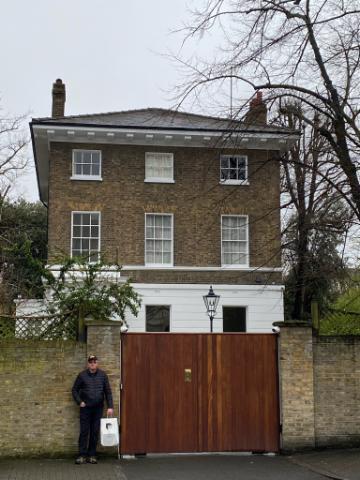 This brings the time of writing to July and August of 1969. Since John, when interviewed, gave full composer credit for the song to Paul, “The End” can be claimed entirely as a McCartney composition, undoubtedly written at his St. John's Wood home in London. Paul, however, left a good amount of breathing space in the song for individual artistic expression for the rest of his bandmates, resulting in inventive guitar and drum solos. This brings the time of writing to July and August of 1969. Since John, when interviewed, gave full composer credit for the song to Paul, “The End” can be claimed entirely as a McCartney composition, undoubtedly written at his St. John's Wood home in London. Paul, however, left a good amount of breathing space in the song for individual artistic expression for the rest of his bandmates, resulting in inventive guitar and drum solos.
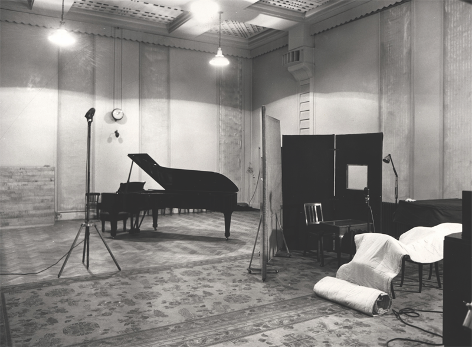
EMI Studio Three
Recording History
As stated above, Paul brought idea for a conclusion to the long medley into the recording studio on July 23rd, 1969. It had been theree weeks since "Golden Slumbers / Carry That Weight" had been started, the conclusion of this track having an open ending to be built upon later. So finally, Paul brought The Beatles into EMI Studio Three on this day to start recording that which the previous track would flow directly into.
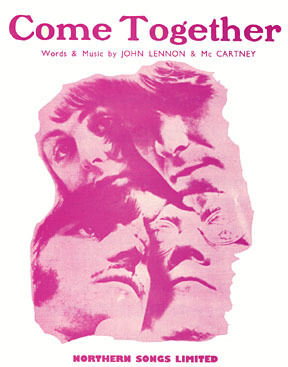 This session is documented to have begun at 2:30 pm, however the first thing recorded on this day was the final lead vocal attempt by Paul for his song “Oh! Darling,” which seems to indicate that he was the only Beatle present at this point. Then, after an overdub recorded for John's song “Come Together” was accomplished, attention turned to what was documented as “Ending" on the tape box. This session is documented to have begun at 2:30 pm, however the first thing recorded on this day was the final lead vocal attempt by Paul for his song “Oh! Darling,” which seems to indicate that he was the only Beatle present at this point. Then, after an overdub recorded for John's song “Come Together” was accomplished, attention turned to what was documented as “Ending" on the tape box.
 “A good deal of rehearsal time must have preceded the rolling of tapes during this session,” explains historian Mark Lewisohn in his book "The Beatles Recording Sessions." His supposition was found to be correct since, as noted by Kevin Howlett who writes in the liner notes of the 50th Anniversary edition of "Abbey Road," The Beatles had apparently gone through 33 rehearsal takes of "Ending" before they were ready to officially record the rhythm track. These numbered rehearsals were committed to tape and then, when they felt that they had perfected their performance and arrangement, the tape was wound back to the beginning to start recording the official "take one." After seven official takes were then recorded, the rest of the original tape reveals rehearsal takes 22 through 33. “A good deal of rehearsal time must have preceded the rolling of tapes during this session,” explains historian Mark Lewisohn in his book "The Beatles Recording Sessions." His supposition was found to be correct since, as noted by Kevin Howlett who writes in the liner notes of the 50th Anniversary edition of "Abbey Road," The Beatles had apparently gone through 33 rehearsal takes of "Ending" before they were ready to officially record the rhythm track. These numbered rehearsals were committed to tape and then, when they felt that they had perfected their performance and arrangement, the tape was wound back to the beginning to start recording the official "take one." After seven official takes were then recorded, the rest of the original tape reveals rehearsal takes 22 through 33.
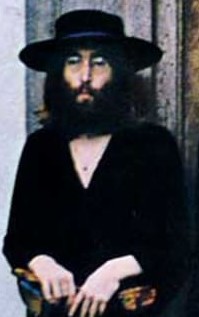 Mark Lewisohn continues: “After John Lennon counted the group in, right from "take one" this was a tight recording, picking up with some lead guitar notes and paving the way for Ringo's one and only drum solo on a Beatles song. The group had seven attempts at the song and, interestingly, the style of the drum solo changed with each. The final edition, "take seven," was a highly effective one, the solo lasting almost 16 seconds." The instrumentation was Ringo on drums being recorded on two tracks (one and two) so that his solo could be spread across the stereo landscape, John on guitar (track three), George on guitar (track four) and Paul on bass (track five). Mark Lewisohn continues: “After John Lennon counted the group in, right from "take one" this was a tight recording, picking up with some lead guitar notes and paving the way for Ringo's one and only drum solo on a Beatles song. The group had seven attempts at the song and, interestingly, the style of the drum solo changed with each. The final edition, "take seven," was a highly effective one, the solo lasting almost 16 seconds." The instrumentation was Ringo on drums being recorded on two tracks (one and two) so that his solo could be spread across the stereo landscape, John on guitar (track three), George on guitar (track four) and Paul on bass (track five).
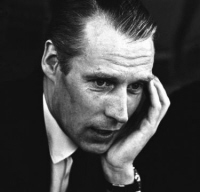 “Solos have never interested me,” Ringo stated in the book “Beatles Anthology.” “That drum solo is still the only one I've done...I was opposed to it: 'I don't want to do no bloody solo!' George Martin convinced me. As I was playing it, he counted it because we needed a time. It was the most ridiculous thing. I was going, 'Dum, dum – one, two, three, four...' and I had to come off at that strange place because it was thirteen bars long. Anyway, I did it, and it's out of the way. I'm pleased now that we've got one down." George Martin was in the studio with the group instead of the control room during the recording, the purpose apparently being to aid Ringo in keeping the drum solo measures straight and to stipulate when his bandmates were coming back in to conclude the song. “Solos have never interested me,” Ringo stated in the book “Beatles Anthology.” “That drum solo is still the only one I've done...I was opposed to it: 'I don't want to do no bloody solo!' George Martin convinced me. As I was playing it, he counted it because we needed a time. It was the most ridiculous thing. I was going, 'Dum, dum – one, two, three, four...' and I had to come off at that strange place because it was thirteen bars long. Anyway, I did it, and it's out of the way. I'm pleased now that we've got one down." George Martin was in the studio with the group instead of the control room during the recording, the purpose apparently being to aid Ringo in keeping the drum solo measures straight and to stipulate when his bandmates were coming back in to conclude the song.
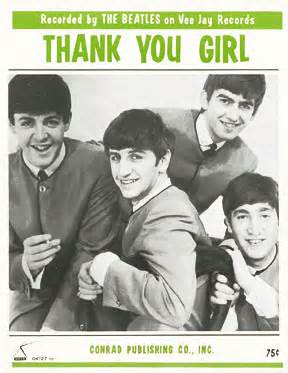 Engineer Geoff Emerick, in his book “Here, There And Everywhere,” relates the experience of witnessing Ringo being talked into doing this solo. “'You know how much I hate solos,' Ringo kept saying, same as he did when we were working on 'A Day In The Life.' 'Well, just do a token solo then,' Paul said half jokingly. Ringo looked to Lennon and Harrison for support, but, for once, they were siding with Paul. Eventually Ringo capitulated and performed the only drum solo – if you discount his little fills at the end of the 1963 B-side 'Thank You Girl' – ever to appear on a Beatles record.” Engineer Geoff Emerick, in his book “Here, There And Everywhere,” relates the experience of witnessing Ringo being talked into doing this solo. “'You know how much I hate solos,' Ringo kept saying, same as he did when we were working on 'A Day In The Life.' 'Well, just do a token solo then,' Paul said half jokingly. Ringo looked to Lennon and Harrison for support, but, for once, they were siding with Paul. Eventually Ringo capitulated and performed the only drum solo – if you discount his little fills at the end of the 1963 B-side 'Thank You Girl' – ever to appear on a Beatles record.”
 Geoff Emerick continues: “Even after extensive coaching from Paul, Ringo still wasn't sure what he was going to play, and I could see that he wasn't the least bit confident that he could pull it off, either. We had to do a lot of takes, and each take was quite different. The final solo he played was actually considerably longer than what eventually made it onto the album – with input from Paul and George Martin, I edited it down significantly, using only the best bits." Upon listening to available takes from the master tape, as well as the knowledge that George Martin was present on the studio floor specifically to instruct Ringo about the exact open measures he was to play for the solo, it appears that Geoff Emerick's recollections about editing out unwanted "bits" of his drum solo are in error. Geoff Emerick continues: “Even after extensive coaching from Paul, Ringo still wasn't sure what he was going to play, and I could see that he wasn't the least bit confident that he could pull it off, either. We had to do a lot of takes, and each take was quite different. The final solo he played was actually considerably longer than what eventually made it onto the album – with input from Paul and George Martin, I edited it down significantly, using only the best bits." Upon listening to available takes from the master tape, as well as the knowledge that George Martin was present on the studio floor specifically to instruct Ringo about the exact open measures he was to play for the solo, it appears that Geoff Emerick's recollections about editing out unwanted "bits" of his drum solo are in error.
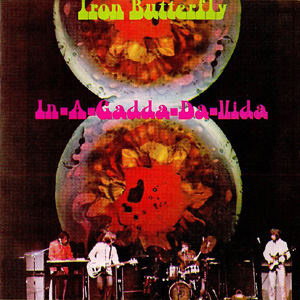 But there was a particular inspiration that Ringo had for this drum solo. Ron Bushy, drummer for the rock band Iron Butterfly, explains in Andy Babiuk's book “Beatles Gear”: “We played London back in '71, and Ringo and Paul came to see us. Ringo sent up his man backstage and invited me out to a private club called Tramps. We had dinner and drinks and were up all night shooting the sh*t. He told me then that he kind of copped my solo (on "In-A-Gadda-Da-Vida") for their song 'The End' on 'Abbey Road.' And I just thought that was cool. It was the biggest compliment that I could ever get.” But there was a particular inspiration that Ringo had for this drum solo. Ron Bushy, drummer for the rock band Iron Butterfly, explains in Andy Babiuk's book “Beatles Gear”: “We played London back in '71, and Ringo and Paul came to see us. Ringo sent up his man backstage and invited me out to a private club called Tramps. We had dinner and drinks and were up all night shooting the sh*t. He told me then that he kind of copped my solo (on "In-A-Gadda-Da-Vida") for their song 'The End' on 'Abbey Road.' And I just thought that was cool. It was the biggest compliment that I could ever get.”
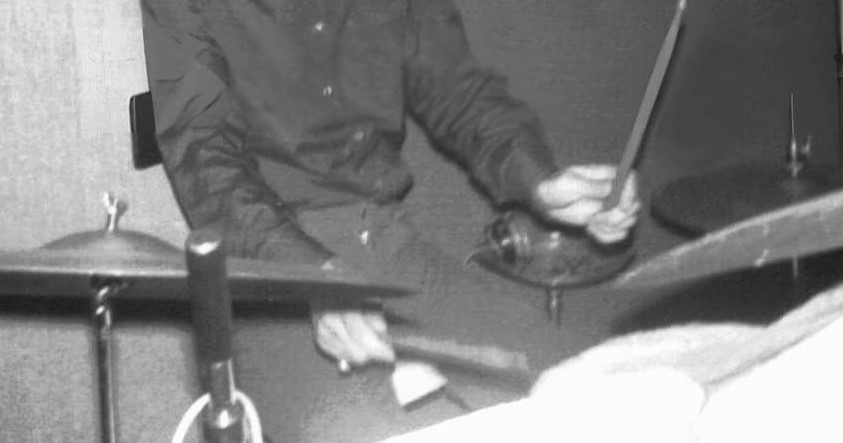 Geoff Emerick then explains the recording process used for Ringo's solo. “One of the benefits of working in eight-track was that we were able to record Ringo's solo in stereo, spread over two tracks, allowing the listener to hear different tom-toms and cymbals in each speaker. That was very unusual for a Beatles song: drums were almost always recorded in mono, even after we made the move to eight-track. The new mixing console also provided many more inputs than the old one, so I was able to put a dozen or so mics on Ringo's kit, as opposed to the three or four that I had used previously.” Geoff Emerick then explains the recording process used for Ringo's solo. “One of the benefits of working in eight-track was that we were able to record Ringo's solo in stereo, spread over two tracks, allowing the listener to hear different tom-toms and cymbals in each speaker. That was very unusual for a Beatles song: drums were almost always recorded in mono, even after we made the move to eight-track. The new mixing console also provided many more inputs than the old one, so I was able to put a dozen or so mics on Ringo's kit, as opposed to the three or four that I had used previously.”
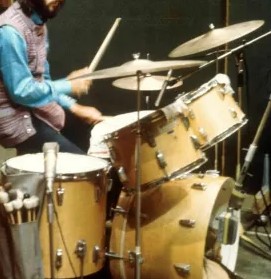 Geoff Emerick continues: “Having more mics gave me finer control over shaping the sound, though it also provided the potential for more technical problems (such as signals canceling each other out), so I had to be extremely careful about mic positioning and creating the proper balance. I would often wander into the studio and literally put my ear in different places, listening to the difference in sound if I were a quarter inch versus a full inch away from the drumskin, or the way the tonality of a cymbal changed if you listened to the edge of it instead of the top. For me, that was always the key to mic positioning: doing lots of listening out in the studio.” It has been documented that a total of twelve microphones were used around Ringo's drum kit during the recording of this solo. Geoff Emerick continues: “Having more mics gave me finer control over shaping the sound, though it also provided the potential for more technical problems (such as signals canceling each other out), so I had to be extremely careful about mic positioning and creating the proper balance. I would often wander into the studio and literally put my ear in different places, listening to the difference in sound if I were a quarter inch versus a full inch away from the drumskin, or the way the tonality of a cymbal changed if you listened to the edge of it instead of the top. For me, that was always the key to mic positioning: doing lots of listening out in the studio.” It has been documented that a total of twelve microphones were used around Ringo's drum kit during the recording of this solo.
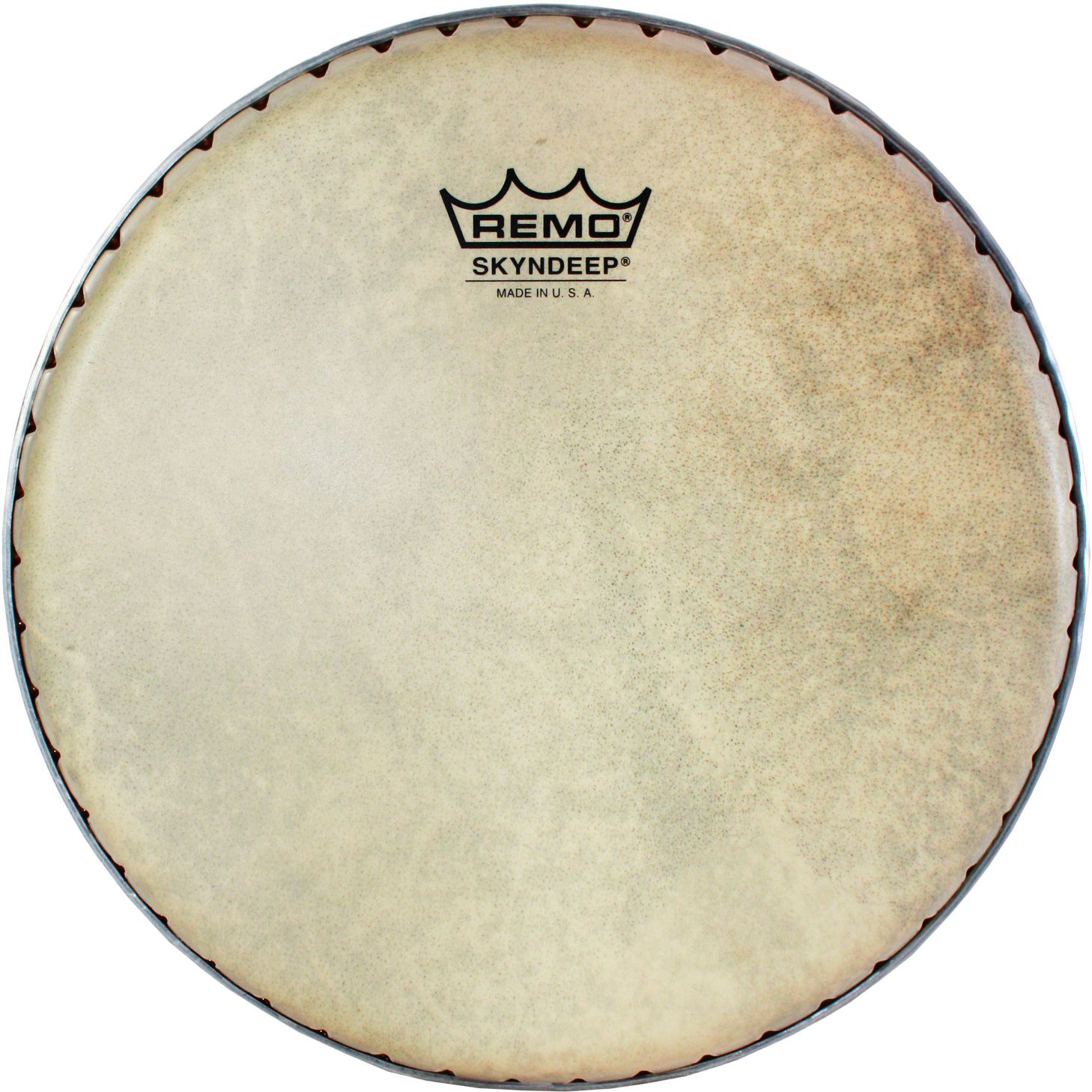 Ringo also explains the difference heard in the sound of his drums on this song as well as the rest of the “Abbey Road” album: “Just a personal thing of mine: the drum sound on the record was the result of having new calf-heads. There's lot of tom-tom work on that record. I got the new heads on the drum and I naturally used them a lot – they were so great. The magic of real records is that they showed tom-toms were so good. I don't believe that magic is there now, because there's so much more manipulation.” Ringo also explains the difference heard in the sound of his drums on this song as well as the rest of the “Abbey Road” album: “Just a personal thing of mine: the drum sound on the record was the result of having new calf-heads. There's lot of tom-tom work on that record. I got the new heads on the drum and I naturally used them a lot – they were so great. The magic of real records is that they showed tom-toms were so good. I don't believe that magic is there now, because there's so much more manipulation.”
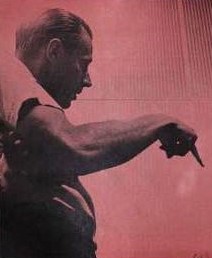 "Take three" is included on various 50th Anniversary editions of "Abbey Road." No vocals or guitar solos were thought of yet, the rhythm track being recorded as a full instrumental performance. The drum solo contains less tom-tom beats but is exactly at the correct amount of measures thanks to instruction from George Martin whose voice is quietly heard on the recording. The intrumental section that follows is twenty-two measures long and, after the song's abrupt ending, John leads the group through a humorous campy conclusion. After this, all four instrumentalists are heard chatting among themselves, George Martin asking the drummer, "How are you feeling, Ringo? Hard work, isn't it?" "Take three" is included on various 50th Anniversary editions of "Abbey Road." No vocals or guitar solos were thought of yet, the rhythm track being recorded as a full instrumental performance. The drum solo contains less tom-tom beats but is exactly at the correct amount of measures thanks to instruction from George Martin whose voice is quietly heard on the recording. The intrumental section that follows is twenty-two measures long and, after the song's abrupt ending, John leads the group through a humorous campy conclusion. After this, all four instrumentalists are heard chatting among themselves, George Martin asking the drummer, "How are you feeling, Ringo? Hard work, isn't it?"
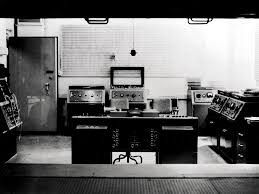 "Take seven," the final take, was deemed the best, this also featuring twenty-two measures of instrumental vamping after Ringo's drum solo. As stipulated in the book "The Beatles Recording Sessions," this final take was only one minute and 20 seconds in length. The recording session ended at 11:30 pm, followed by the group and the engineering staff filing into the EMI Studio Two control room to listen to a playback for another hour. "Take seven," the final take, was deemed the best, this also featuring twenty-two measures of instrumental vamping after Ringo's drum solo. As stipulated in the book "The Beatles Recording Sessions," this final take was only one minute and 20 seconds in length. The recording session ended at 11:30 pm, followed by the group and the engineering staff filing into the EMI Studio Two control room to listen to a playback for another hour.
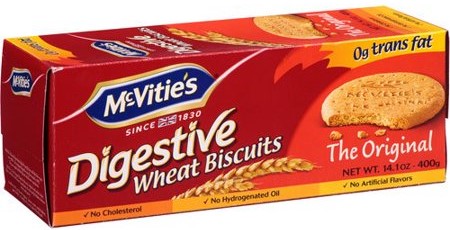 An interesting event happened while they were in the control room at this time, witnessed by Geoff Emerick. “When the four Beatles trooped upstairs to listen to some playbacks, Yoko stayed behind, stretched out languorously in the bed, wearing the usual flimsy nightgown and tiara. (John arranged for a bed to be brought into the recording studio for Yoko to recuperate from their recent automobile accident in Scotland.) As we were listening, I noticed that something down in the studio had caught George Harrison's attention. After a moment or two he began staring bug-eyed out the control room window. Curious, I looked over his shoulder. Yoko had gotten out of bed and was slowly padding across the studio floor, finally coming to a stop at Harrison's Leslie cabinet, which had a packet of McVitie's Digestive Biscuits on top. Idly, she began opening the packet and delicately removed a single biscuit. Just as the morsel reached her mouth, Harrison could contain himself no longer.” An interesting event happened while they were in the control room at this time, witnessed by Geoff Emerick. “When the four Beatles trooped upstairs to listen to some playbacks, Yoko stayed behind, stretched out languorously in the bed, wearing the usual flimsy nightgown and tiara. (John arranged for a bed to be brought into the recording studio for Yoko to recuperate from their recent automobile accident in Scotland.) As we were listening, I noticed that something down in the studio had caught George Harrison's attention. After a moment or two he began staring bug-eyed out the control room window. Curious, I looked over his shoulder. Yoko had gotten out of bed and was slowly padding across the studio floor, finally coming to a stop at Harrison's Leslie cabinet, which had a packet of McVitie's Digestive Biscuits on top. Idly, she began opening the packet and delicately removed a single biscuit. Just as the morsel reached her mouth, Harrison could contain himself no longer.”
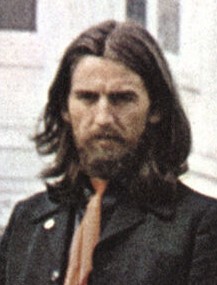 “'THAT B*TCH!!!' Everyone looked aghast, but we all knew exactly who he was talking about. 'She's just taken one of my biscuits!' Harrison explained. He wasn't the least bit sheepish, either. As far as he was concerned, those biscuits were his property, and no one was allowed to go near them. Lennon began shouting back at him, but there was little he could say to defend his wife (who, oblivious, was happily munching away in the studio), because he shared exactly the same attitude toward food.” “'THAT B*TCH!!!' Everyone looked aghast, but we all knew exactly who he was talking about. 'She's just taken one of my biscuits!' Harrison explained. He wasn't the least bit sheepish, either. As far as he was concerned, those biscuits were his property, and no one was allowed to go near them. Lennon began shouting back at him, but there was little he could say to defend his wife (who, oblivious, was happily munching away in the studio), because he shared exactly the same attitude toward food.”
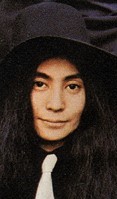 “Actually, I think the argument was not so much about the biscuits, but about the bed, which they had all come to deeply resent. What Harrison was really saying was 'If Yoko is well enough to get out of bed and steal one of my biscuits, she doesn't need to be in the bloody bed in the first place.' It almost didn't matter what the argument was about. By this stage, whenever the four of them were together it was like a tinderbox, and anything could set them off...even something as dumb as a digestive biscuit.” “Actually, I think the argument was not so much about the biscuits, but about the bed, which they had all come to deeply resent. What Harrison was really saying was 'If Yoko is well enough to get out of bed and steal one of my biscuits, she doesn't need to be in the bloody bed in the first place.' It almost didn't matter what the argument was about. By this stage, whenever the four of them were together it was like a tinderbox, and anything could set them off...even something as dumb as a digestive biscuit.”
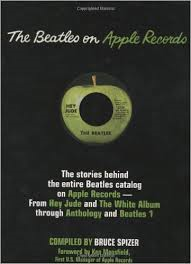 In any event, according to Bruce Spizer's book “The Beatles On Apple Records,” a decision was made after that control room listening session to add an extension to “take seven” of the song. This newly-written extension was then immediately recorded, presumably back in EMI Studio Three where their instruments were still set up. With Paul on piano, John and George on their electric guitars and Ringo on drums, the new conclusion extended the song to just under two minutes in length. This concluded the recording session at an undisclosed time in the early hours of the following day. In any event, according to Bruce Spizer's book “The Beatles On Apple Records,” a decision was made after that control room listening session to add an extension to “take seven” of the song. This newly-written extension was then immediately recorded, presumably back in EMI Studio Three where their instruments were still set up. With Paul on piano, John and George on their electric guitars and Ringo on drums, the new conclusion extended the song to just under two minutes in length. This concluded the recording session at an undisclosed time in the early hours of the following day.
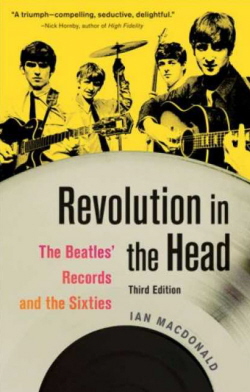 Since the above mentioned final section of the song was an edit piece, this could explain what was brought up by Ian MacDonald in his book “Revolution In The Head.” He states that, as this section of the song begins, “McCartney's piano enters slightly flat, whereupon the remainder of the song is fractionally below concert pitch.” Since the piano wasn't used in the first part of the song, the guitars were probably not tuned to the piano. Therefore, the pitch of the original recording may have been off slightly from the final segment, which appears to have been added as an afterthought. Since the above mentioned final section of the song was an edit piece, this could explain what was brought up by Ian MacDonald in his book “Revolution In The Head.” He states that, as this section of the song begins, “McCartney's piano enters slightly flat, whereupon the remainder of the song is fractionally below concert pitch.” Since the piano wasn't used in the first part of the song, the guitars were probably not tuned to the piano. Therefore, the pitch of the original recording may have been off slightly from the final segment, which appears to have been added as an afterthought.
 Since all of the segments of the long “Abbey Road” medley had at least been partially recorded, The Beatles decided a week later, on July 30th, 1969, to string all of these segments together to see if they fit together properly. After a couple other recording sessions earlier in the day, they met in the control room of EMI Studio Two at 10:30 pm to make a dry-run at piecing together the medley. The first act of business, however, was to create stereo mixes of all of the tracks individually, one attempt being made on each segment by producer George Martin and engineers Geoff Emerick, Phil McDonald and John Kurlander. Since all of the segments of the long “Abbey Road” medley had at least been partially recorded, The Beatles decided a week later, on July 30th, 1969, to string all of these segments together to see if they fit together properly. After a couple other recording sessions earlier in the day, they met in the control room of EMI Studio Two at 10:30 pm to make a dry-run at piecing together the medley. The first act of business, however, was to create stereo mixes of all of the tracks individually, one attempt being made on each segment by producer George Martin and engineers Geoff Emerick, Phil McDonald and John Kurlander.
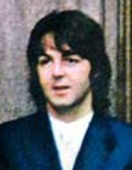 This having been accomplished, they edited, cross-faded and compiled the medley, the track so far entitled “Ending” being just under two minutes in length, the instrumental vamping section after the drum solo still being twenty-two measures in length. Since this trial edit and mix was included in various 50th Anniversary editions of "Abbey Road," we can hear exactly what "take seven" of "The End" sounded like at this stage. There were a few adjustments proposed for the medley, such as omitting Paul's track “Her Majesty,” which had been included just after “Mean Mr. Mustard” and was instead included on the album many seconds after “The End” ended. The session ended at 2:30 am the following morning. This having been accomplished, they edited, cross-faded and compiled the medley, the track so far entitled “Ending” being just under two minutes in length, the instrumental vamping section after the drum solo still being twenty-two measures in length. Since this trial edit and mix was included in various 50th Anniversary editions of "Abbey Road," we can hear exactly what "take seven" of "The End" sounded like at this stage. There were a few adjustments proposed for the medley, such as omitting Paul's track “Her Majesty,” which had been included just after “Mean Mr. Mustard” and was instead included on the album many seconds after “The End” ended. The session ended at 2:30 am the following morning.
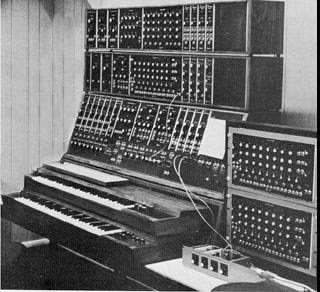 Nearly a week later, on August 5th, 1969, The Beatles gave more attention to what was still referred to as “Ending.” They entered EMI Studio Two at 6:30 pm and, after adding a Moog Synthesizer overdub to John's track “Because,” the first vocal overdubs to “Ending” were recorded at approximately 9 pm. Paul sang spirited lead vocals (“Oh yeah, all right...etc) in the opening section of the song, and then double-tracked them. Paul then added his famous “And in the end...” line in the final section of the track, and then double-tracked it and harmonized with himself as an overdub. This was complete by 10:45 pm that evening, which ended the session. Nearly a week later, on August 5th, 1969, The Beatles gave more attention to what was still referred to as “Ending.” They entered EMI Studio Two at 6:30 pm and, after adding a Moog Synthesizer overdub to John's track “Because,” the first vocal overdubs to “Ending” were recorded at approximately 9 pm. Paul sang spirited lead vocals (“Oh yeah, all right...etc) in the opening section of the song, and then double-tracked them. Paul then added his famous “And in the end...” line in the final section of the track, and then double-tracked it and harmonized with himself as an overdub. This was complete by 10:45 pm that evening, which ended the session.
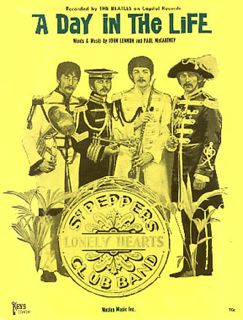 Two days later, on August 7th, 1969, they added some additional overdubs to the song, one of which was very important. Geoff Emerick relates: “There were quite a few empty bars to fill after Ringo's drum solo – Paul had left them bare in a spirit of 'we'll think of something eventually,' just as we had done with the middle section of 'A Day In The Life' – and there was a long discussion about what to add on top to flesh it out. 'Well, a guitar solo is the obvious thing,' said George Harrison. 'Yes, but this time you should let me play it,' said John jokingly. He loved playing lead guitar – he'd often mess about doing lead parts during rehearsals – but he knew that he didn't have the finesse of eigher George or Paul, so he rarely did so on record. Everyone laughed, including John, but we could see that he was at least half-serious.” Two days later, on August 7th, 1969, they added some additional overdubs to the song, one of which was very important. Geoff Emerick relates: “There were quite a few empty bars to fill after Ringo's drum solo – Paul had left them bare in a spirit of 'we'll think of something eventually,' just as we had done with the middle section of 'A Day In The Life' – and there was a long discussion about what to add on top to flesh it out. 'Well, a guitar solo is the obvious thing,' said George Harrison. 'Yes, but this time you should let me play it,' said John jokingly. He loved playing lead guitar – he'd often mess about doing lead parts during rehearsals – but he knew that he didn't have the finesse of eigher George or Paul, so he rarely did so on record. Everyone laughed, including John, but we could see that he was at least half-serious.”
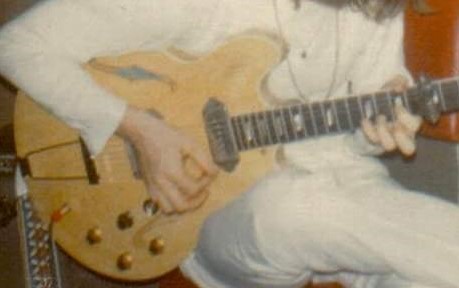 “'I know!' he said mischievously, unwilling to let it go. 'Why don't we all play the solo? We can take turns and trade licks.' Long guitar solos with dueling lead guitarists were becoming the vogue at the time, so it was a suggestion that clearly had merit. George (Martin) looked dubious, but Paul not only embraced the idea but upped the ante further still: 'Better yet,' he said, 'why don't all three of us play it live?' Lennon loved the idea – for the first time in weeks I saw a real gleam in his eye. It didn't take long for John's enthusiasm to rub off on George Harrison, who finally got into the spirit of things.” “'I know!' he said mischievously, unwilling to let it go. 'Why don't we all play the solo? We can take turns and trade licks.' Long guitar solos with dueling lead guitarists were becoming the vogue at the time, so it was a suggestion that clearly had merit. George (Martin) looked dubious, but Paul not only embraced the idea but upped the ante further still: 'Better yet,' he said, 'why don't all three of us play it live?' Lennon loved the idea – for the first time in weeks I saw a real gleam in his eye. It didn't take long for John's enthusiasm to rub off on George Harrison, who finally got into the spirit of things.”
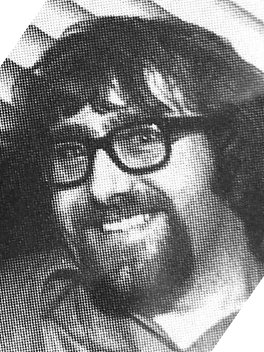 Geoff Emerick continues: “Mal (Evans) was immediately sent out into the studio to set up the guitar amps, while the three Beatles stayed in the control room, listening to the backing track and thinking about what they were going to play. Paul announced that he wanted to take the first solo, and since it was his song, the others deferred. Ever competitive, John said that he had a great idea for an ending, so he was going to go last. As always, poor George Harrison was overshadowed by his two bandmates and got the middle spot by default. Yoko, as usual, was sitting by John's side in the control room while they were having this discussion, but as Lennon got up to walk out into the studio, he turned to her and said gently, 'Wait here, luv; I won't be a minute.'” Geoff Emerick continues: “Mal (Evans) was immediately sent out into the studio to set up the guitar amps, while the three Beatles stayed in the control room, listening to the backing track and thinking about what they were going to play. Paul announced that he wanted to take the first solo, and since it was his song, the others deferred. Ever competitive, John said that he had a great idea for an ending, so he was going to go last. As always, poor George Harrison was overshadowed by his two bandmates and got the middle spot by default. Yoko, as usual, was sitting by John's side in the control room while they were having this discussion, but as Lennon got up to walk out into the studio, he turned to her and said gently, 'Wait here, luv; I won't be a minute.'”
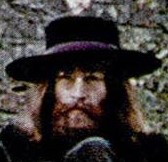 “She looked a little shocked and hurt, but she did as John asked, sitting quietly by the control room window for the remainder of the session. It was almost as if he knew that she would put a damper on things and spoil the atmosphere if she were in the studio with them. Something inside told John that to get this to work, he needed to be doing it with just Paul and George, that it would be better for Yoko not to be by his side this one time. Maybe that was the reason, or perhaps it was because on some subconscious level they had decided to suspend their egos for the sake of the music, but for the hour or so that it took them to play those solos, all the bad blood, all the fighting, all the crap that had gone down between the three former friends was forgotten. John, Paul and George looked like they had gone back in time, like they were kids again, playing together for the sheer enjoyment of it. More than anything, they reminded me of gunslingers, with their guitars strapped on, looks of steely-eyed resolve, determined to outdo one another. Yet there was no animosity, no tension at all – you could tell that they were simply having fun.” “She looked a little shocked and hurt, but she did as John asked, sitting quietly by the control room window for the remainder of the session. It was almost as if he knew that she would put a damper on things and spoil the atmosphere if she were in the studio with them. Something inside told John that to get this to work, he needed to be doing it with just Paul and George, that it would be better for Yoko not to be by his side this one time. Maybe that was the reason, or perhaps it was because on some subconscious level they had decided to suspend their egos for the sake of the music, but for the hour or so that it took them to play those solos, all the bad blood, all the fighting, all the crap that had gone down between the three former friends was forgotten. John, Paul and George looked like they had gone back in time, like they were kids again, playing together for the sheer enjoyment of it. More than anything, they reminded me of gunslingers, with their guitars strapped on, looks of steely-eyed resolve, determined to outdo one another. Yet there was no animosity, no tension at all – you could tell that they were simply having fun.”
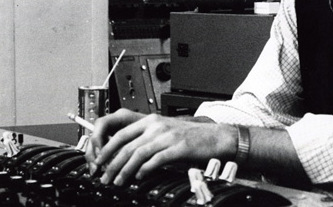 “While they were practicing, I took great care to craft a different, distinctive sound for each Beatle, so it would be apparent to the listener that it was three individuals playing and not just one person taking an extended solo. They were each playing a different model guitar through a different type of amplifier, so it wasn't all that difficult to achieve. I had Mal (Evans) line the three amps up in a row – there was no need for a great deal of separation because they were all going to be recorded on a single track. Because there was little overlap between each two-bar solo, I knew that I could balance the levels afterward simply by moving one fader.” “While they were practicing, I took great care to craft a different, distinctive sound for each Beatle, so it would be apparent to the listener that it was three individuals playing and not just one person taking an extended solo. They were each playing a different model guitar through a different type of amplifier, so it wasn't all that difficult to achieve. I had Mal (Evans) line the three amps up in a row – there was no need for a great deal of separation because they were all going to be recorded on a single track. Because there was little overlap between each two-bar solo, I knew that I could balance the levels afterward simply by moving one fader.”
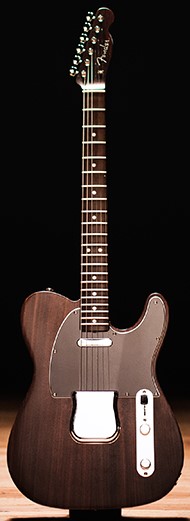 “Incredibly, after just a brief period of rehearsal, they nailed it in a single take. When it was over, there was no backslapping or hugging – The Beatles rarely expressed themselves physically like that – but there were lots of broad grins. It was a heartwarming moment – and one of the rare times I could say that in recent months – and I made a point of congratulating each of them when they came into the control room to have a listen. I was so blown away by Harrison's playing in particular that I made a point of saying 'That was really brilliant' as he walked through the door. George looked a bit surprised, but he gave me a nod and a gracious thank-you. It was one of the few times when I felt like I had connected on a personal level with him.” “Incredibly, after just a brief period of rehearsal, they nailed it in a single take. When it was over, there was no backslapping or hugging – The Beatles rarely expressed themselves physically like that – but there were lots of broad grins. It was a heartwarming moment – and one of the rare times I could say that in recent months – and I made a point of congratulating each of them when they came into the control room to have a listen. I was so blown away by Harrison's playing in particular that I made a point of saying 'That was really brilliant' as he walked through the door. George looked a bit surprised, but he gave me a nod and a gracious thank-you. It was one of the few times when I felt like I had connected on a personal level with him.”
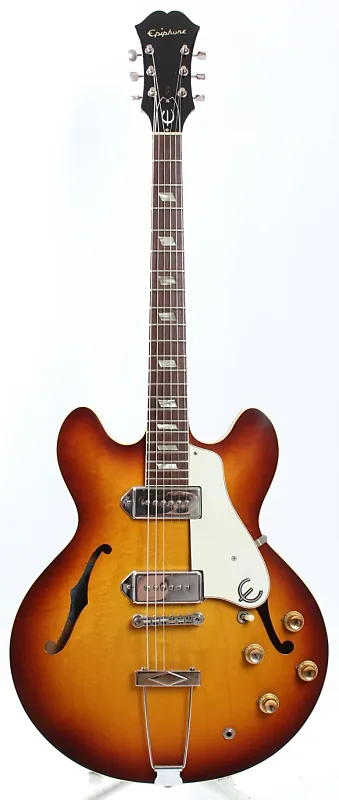 “I guess there's also the possibility that, as they were performing the solo, they realized they might never get to play together again; perhaps they were viewing that moment as a poignant farewell. It was the first time in a long time that the three of them were actually playing together in the studio; for most of the 'Abbey Road' sessions, it was just one or two of them, plus, sometimes, Ringo...for me, that session was undoubtedly the high point of the summer of 1969, and listening to those guitar solos still never fails to bring a smile to my face. If the good feelings engendered by that one day had only been present throughout the entire project, there's no telling how great 'Abbey Road' might have been.” “I guess there's also the possibility that, as they were performing the solo, they realized they might never get to play together again; perhaps they were viewing that moment as a poignant farewell. It was the first time in a long time that the three of them were actually playing together in the studio; for most of the 'Abbey Road' sessions, it was just one or two of them, plus, sometimes, Ringo...for me, that session was undoubtedly the high point of the summer of 1969, and listening to those guitar solos still never fails to bring a smile to my face. If the good feelings engendered by that one day had only been present throughout the entire project, there's no telling how great 'Abbey Road' might have been.”
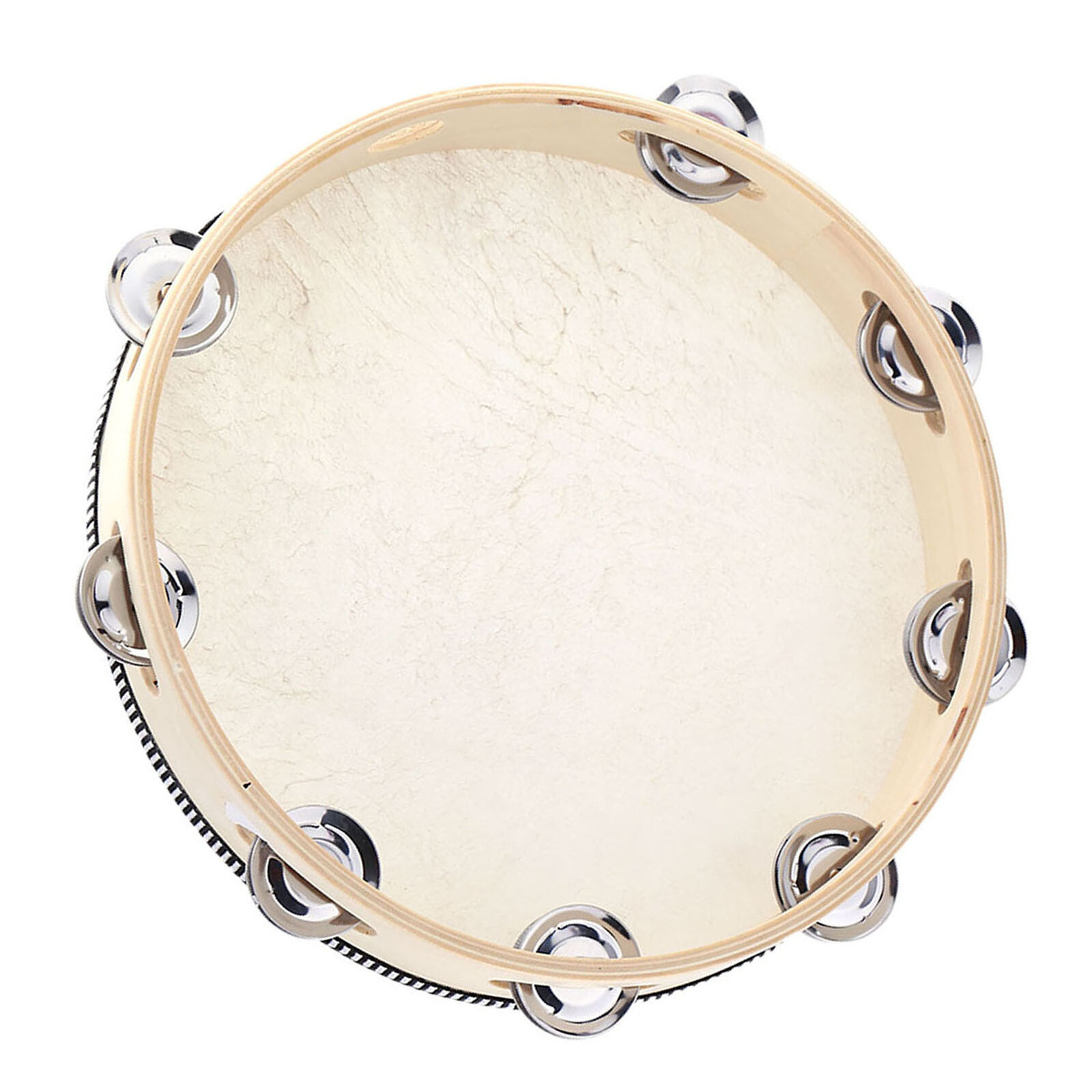 As can be heard on the track as included on the “Anthology 3” compilation album, there was some doodling and practicing on their guitars before the actual solo part came up, some of it heard during Ringo's drum solo section. Ringo also added a tambourine part during his drum solo, this undoubtedly recorded during this same guitar solo session. All three solo guitarists were recorded onto track four of the eight-track tape, John and George's guitar parts from the rhythm track being combined onto track seven before the lead guitar parts were recorded. The instrumental vamping section of the song was still twenty-two measures long, as witnessed on "Anthology 3." As can be heard on the track as included on the “Anthology 3” compilation album, there was some doodling and practicing on their guitars before the actual solo part came up, some of it heard during Ringo's drum solo section. Ringo also added a tambourine part during his drum solo, this undoubtedly recorded during this same guitar solo session. All three solo guitarists were recorded onto track four of the eight-track tape, John and George's guitar parts from the rhythm track being combined onto track seven before the lead guitar parts were recorded. The instrumental vamping section of the song was still twenty-two measures long, as witnessed on "Anthology 3."
 Another element of "Ending" was recorded on this day, this being the repeated "love you" vocals that are heard during the instrumental vamping after the drum solo and throughout the guitar solos. These harmony parts were all sung by Paul, one of them being "recorded with the tape machine running slow in order to create the very high notes that are heard when played back at normal speed," says Kevin Howlett in the "Abbey Road" 50th Anniversary book. Interestingly, six additional measures of the instrumental vamping after Ringo's drum solo were edited into the mix at this point to allow for these "love you" harmonies to be heard prior to the guitar solos, this extending the "vamping" section of the song from twenty-two to twenty-eight measures. This session was complete by midnight. Another element of "Ending" was recorded on this day, this being the repeated "love you" vocals that are heard during the instrumental vamping after the drum solo and throughout the guitar solos. These harmony parts were all sung by Paul, one of them being "recorded with the tape machine running slow in order to create the very high notes that are heard when played back at normal speed," says Kevin Howlett in the "Abbey Road" 50th Anniversary book. Interestingly, six additional measures of the instrumental vamping after Ringo's drum solo were edited into the mix at this point to allow for these "love you" harmonies to be heard prior to the guitar solos, this extending the "vamping" section of the song from twenty-two to twenty-eight measures. This session was complete by midnight.
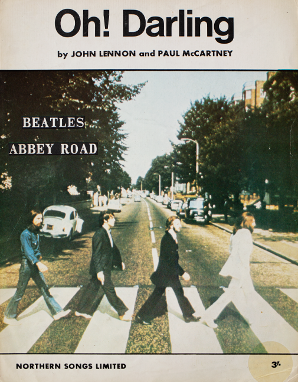 The next day, August 8th, 1969, was also used for recording overdubs for “Ending,” among other things. At 2:30 pm, sometime after their famous front cover photo session walking across “Abbey Road,” they met in EMI Studio Two, first of all to allow Paul to add bass to the closing section of the song, Ringo adding a little more drums in this section also. They then gave attention to John's song “I Want You (She's So Heavy)” before ending the session at 9 pm, Paul also popping into EMI Studio Three to perform some overdubs on “Oh! Darling” in the process. The next day, August 8th, 1969, was also used for recording overdubs for “Ending,” among other things. At 2:30 pm, sometime after their famous front cover photo session walking across “Abbey Road,” they met in EMI Studio Two, first of all to allow Paul to add bass to the closing section of the song, Ringo adding a little more drums in this section also. They then gave attention to John's song “I Want You (She's So Heavy)” before ending the session at 9 pm, Paul also popping into EMI Studio Three to perform some overdubs on “Oh! Darling” in the process.
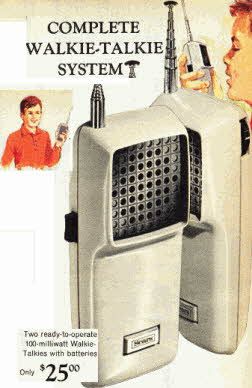 Next came the task of recording strings onto the newly vacated track three of the song, this occurring on August 15th, 1969, at 2:30 pm in EMI Studio One and Two. “It was a mammoth session,” recalls engineer Alan Brown, concerning them recording the orchestral musicians in the larger Studio One while linking the performance to the eight-track recording equipment in Studio Two. “We had a large number of lines linking the studios,” Alan Brown remembers, “and we were all walking around the building with walkie-talkies trying to communicate with each other. The orchestral overdub for 'The End' was the most elaborate I have ever heard: a 30-piece playing for not too many seconds, and mixed about 40 dBs down. It cost a lot of money: all the musicians have to be paid, fed and watered.” Next came the task of recording strings onto the newly vacated track three of the song, this occurring on August 15th, 1969, at 2:30 pm in EMI Studio One and Two. “It was a mammoth session,” recalls engineer Alan Brown, concerning them recording the orchestral musicians in the larger Studio One while linking the performance to the eight-track recording equipment in Studio Two. “We had a large number of lines linking the studios,” Alan Brown remembers, “and we were all walking around the building with walkie-talkies trying to communicate with each other. The orchestral overdub for 'The End' was the most elaborate I have ever heard: a 30-piece playing for not too many seconds, and mixed about 40 dBs down. It cost a lot of money: all the musicians have to be paid, fed and watered.”
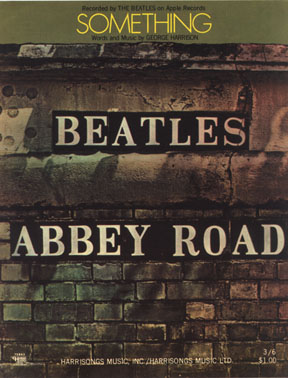 Geoff Emerick recalls: The day was broken up into two parts: an afternoon session, overdubing parts onto the 'Golden Slumbers / Carry That Weight' and 'The End' sections of the medley; and an evening session, when we'd be adding orchestra to George Harrison's 'Here Comes The Sun' and 'Something.' Following the pattern that had been established for much of the album, the only Beatle at the afternoon session was Paul, and the only one at the evening session was George Harrison. Phil McDonald, however, was there with me for the entire day – working in two studios at once really complicated things, and we needed the extra pair of hands. George Martin did the conducting while each Beatle essentially produced his own session. Thankfully, there were no major technical mishaps and everything worked smoothly.” Geoff Emerick recalls: The day was broken up into two parts: an afternoon session, overdubing parts onto the 'Golden Slumbers / Carry That Weight' and 'The End' sections of the medley; and an evening session, when we'd be adding orchestra to George Harrison's 'Here Comes The Sun' and 'Something.' Following the pattern that had been established for much of the album, the only Beatle at the afternoon session was Paul, and the only one at the evening session was George Harrison. Phil McDonald, however, was there with me for the entire day – working in two studios at once really complicated things, and we needed the extra pair of hands. George Martin did the conducting while each Beatle essentially produced his own session. Thankfully, there were no major technical mishaps and everything worked smoothly.”
Paul's afternoon session was complete by 5:30 pm, the names of the 30 classically-trained instrumentalists being lost. Interestingly, a section of the orchestra's performance that occurs during the final moments of the guitar solo section was faded out of the final mix. Evidence of the existence of this closing section by the orchestra is, however, heard on the “Anthology 3” mix of the song.
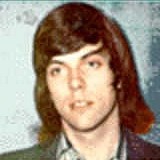 On August 18th, 1969, as the album was being prepared for release, Paul added one final overdub to “Ending.” Paul entered EMI Studio Two around 2:30 pm on this day to re-record his simple piano part at the conclusion of the song that accompanies his final “and in the end...” lyric. He also oversaw stereo mixes of the song, six attempts being made by George Martin and engineers Geoff Emerick, Phil McDonald and Alan Parsons, as well as for “Golden Slumbers / Carry That Weight.” Mark Lewisohn, in his book "The Beatles Recording Sessions," stipulates that “Ending” was extended to 2:41 after all the overdubs were complete. Therefore, it is possible that it had reached this duration with the creation of this mix, the extended portion undoubtedly resulting from manually editing in additional measures to the instrumental vamping section of the song. In any event, the mix made on this day didn't end up being used for the released version. This session ended at 10:30 pm. On August 18th, 1969, as the album was being prepared for release, Paul added one final overdub to “Ending.” Paul entered EMI Studio Two around 2:30 pm on this day to re-record his simple piano part at the conclusion of the song that accompanies his final “and in the end...” lyric. He also oversaw stereo mixes of the song, six attempts being made by George Martin and engineers Geoff Emerick, Phil McDonald and Alan Parsons, as well as for “Golden Slumbers / Carry That Weight.” Mark Lewisohn, in his book "The Beatles Recording Sessions," stipulates that “Ending” was extended to 2:41 after all the overdubs were complete. Therefore, it is possible that it had reached this duration with the creation of this mix, the extended portion undoubtedly resulting from manually editing in additional measures to the instrumental vamping section of the song. In any event, the mix made on this day didn't end up being used for the released version. This session ended at 10:30 pm.
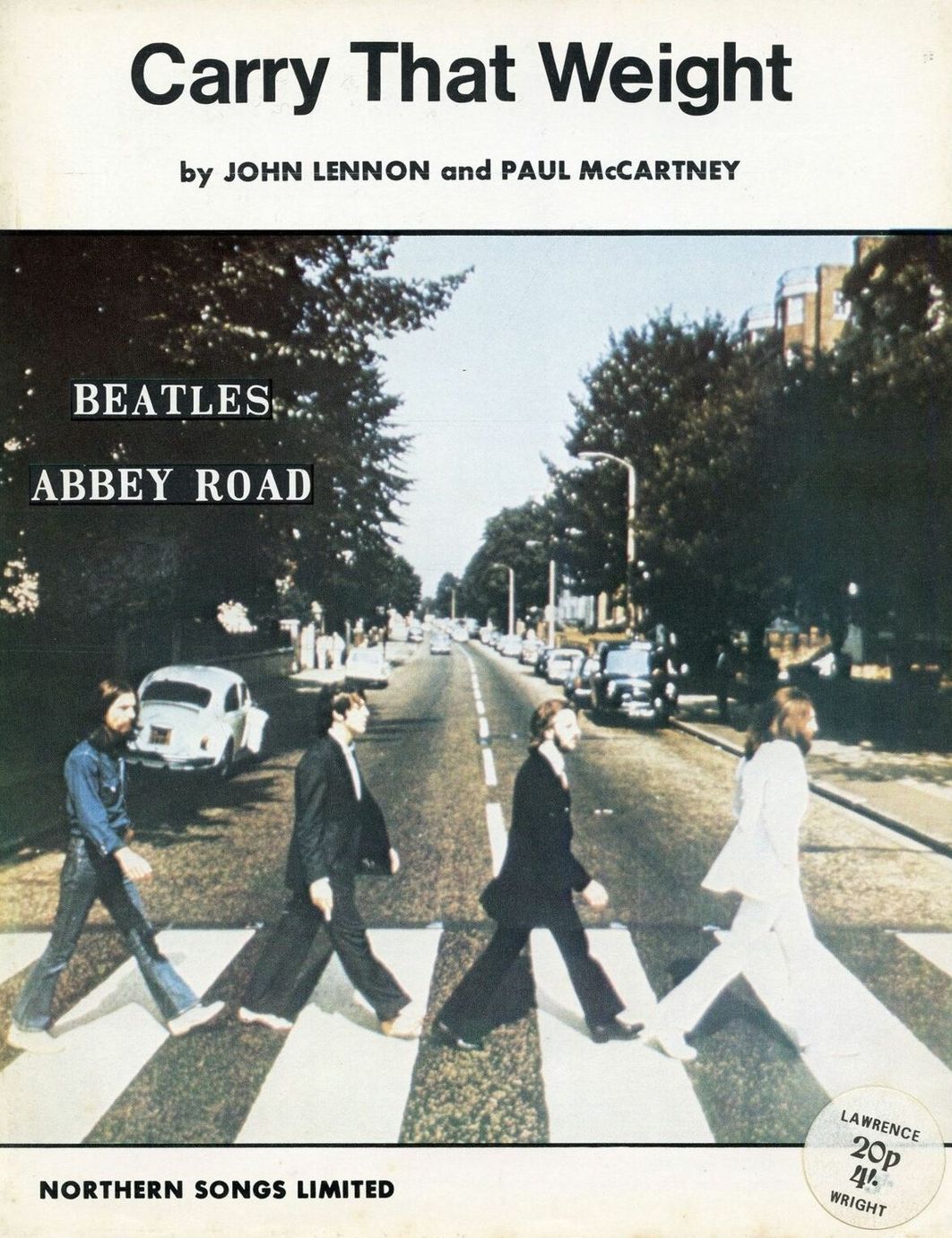 Three more attempts at stereo mixing “Ending” occurred on August 19th, 1969 in the control room of EMI Studio Two by the same engineering team. These attempts were mistakenly numbered remixes 1-3, not counting the six attempts made the previous day. After this was complete, the engineering team edited together the “Golden Slumbers / Carry That Weight” section to what they viewed as the final stereo mix of “Ending.” After concentrating on both of George Harrison's compositions for the album, the session was complete by 4 am the following morning. Three more attempts at stereo mixing “Ending” occurred on August 19th, 1969 in the control room of EMI Studio Two by the same engineering team. These attempts were mistakenly numbered remixes 1-3, not counting the six attempts made the previous day. After this was complete, the engineering team edited together the “Golden Slumbers / Carry That Weight” section to what they viewed as the final stereo mix of “Ending.” After concentrating on both of George Harrison's compositions for the album, the session was complete by 4 am the following morning.
The Beatles and the engineering staff all presumed this mix of “Ending” was ready for release and therefore, on the next day, they all met to sequence and band the songs together in preparation for the release of the album. Interestingly, “Ending,” as “The End” was called throughout its entire recording process, was apparently still 2:41 in length at this point.
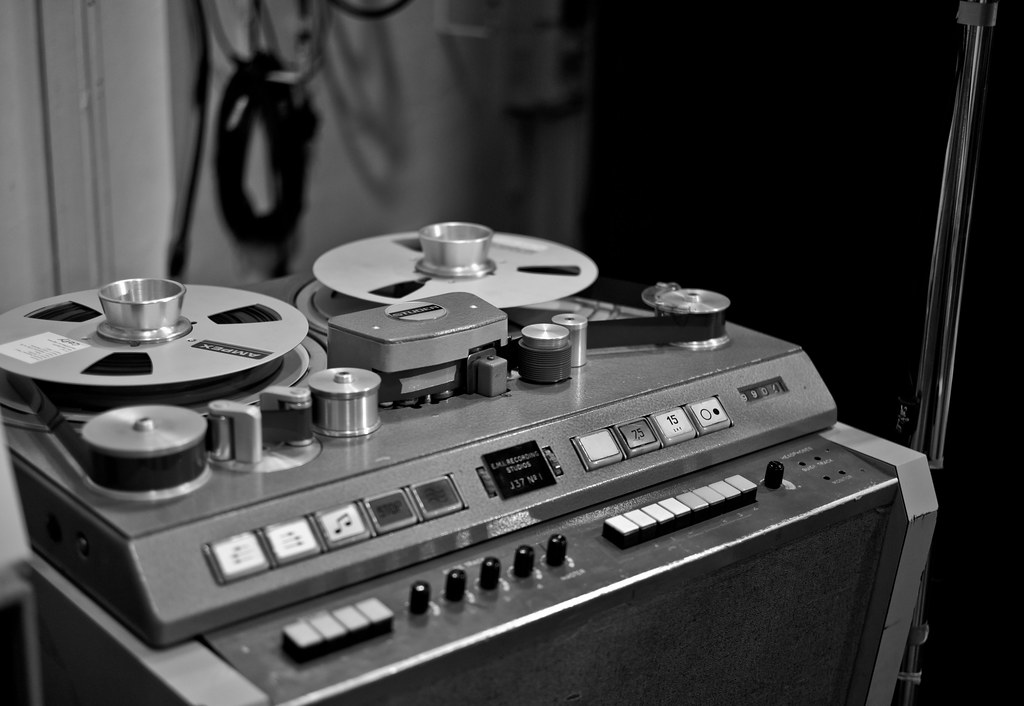 Then, on August 21st, 1969, engineer Phil McDonald was recruited to do some work on “Ending” in Room 4 of EMI Studios between 1 and 2 pm. The album was thought to be complete by everyone, but it was discovered that the orchestra was slightly out of sync with the group's performance on "Ending." Therefore, during this hour-long session, Phil McDonald tape copied the isolated track three of the song, which featured the orchestra performance, onto another tape and then had it "flown in" from another machine during mixing to sync it up properly. The previous engineering team created this mix as well in the control room of EMI Studio Two, presumably while the song was still 2:41 in length. This mixing session, which also concentrated on yet other last minute refinements to “Abbey Road” songs, stretched from 2:30 pm to 12 midnight. Then, on August 21st, 1969, engineer Phil McDonald was recruited to do some work on “Ending” in Room 4 of EMI Studios between 1 and 2 pm. The album was thought to be complete by everyone, but it was discovered that the orchestra was slightly out of sync with the group's performance on "Ending." Therefore, during this hour-long session, Phil McDonald tape copied the isolated track three of the song, which featured the orchestra performance, onto another tape and then had it "flown in" from another machine during mixing to sync it up properly. The previous engineering team created this mix as well in the control room of EMI Studio Two, presumably while the song was still 2:41 in length. This mixing session, which also concentrated on yet other last minute refinements to “Abbey Road” songs, stretched from 2:30 pm to 12 midnight.
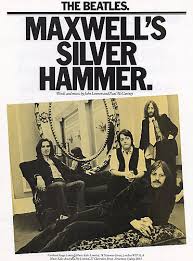 Finally, on August 25th, 1969, it appears that the final decision was made to edit out some of the guitar solo section of “Ending.” A straight edit was made by the same engineering team in the control room of EMI Studio Two, this session starting at 2:30 pm and ending at 8 pm. “Ending” was now 37 seconds shorter, reducing it to 2:04 as we've come to know it, with the instrumental vamping section reduced back to twenty-eight measures. The intro to “Maxwell's Silver Hammer” was also edited out on this day, these being the final touches to the “Abbey Road” album. Finally, on August 25th, 1969, it appears that the final decision was made to edit out some of the guitar solo section of “Ending.” A straight edit was made by the same engineering team in the control room of EMI Studio Two, this session starting at 2:30 pm and ending at 8 pm. “Ending” was now 37 seconds shorter, reducing it to 2:04 as we've come to know it, with the instrumental vamping section reduced back to twenty-eight measures. The intro to “Maxwell's Silver Hammer” was also edited out on this day, these being the final touches to the “Abbey Road” album.
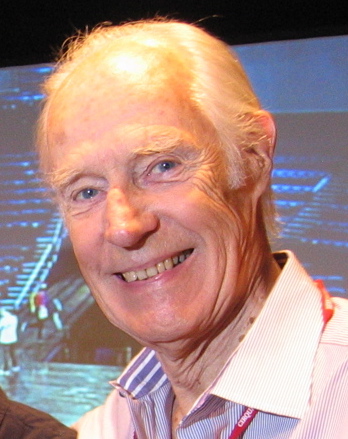 Sometime in 1996, George Martin and Geoff Emerick returned to “The End” to remix a section of the song for inclusion on the compilation album “Anthology 3.” Starting from Ringo's drum solo, they thought to include the extraneous lead guitar practicing, mostly by John, that muddies up the proceedings, as well as Ringo's tambourine overdub during this part. The guitar solos are more prominent in the mix, and the orchestra swells at the end of the guitar solo section can finally be heard. After the heavy orchestra finale, the listener is treated to the final chord of “A Day In The Life” played backward and then forward for a fitting conclusion to the complete “Anthology” package. Sometime in 1996, George Martin and Geoff Emerick returned to “The End” to remix a section of the song for inclusion on the compilation album “Anthology 3.” Starting from Ringo's drum solo, they thought to include the extraneous lead guitar practicing, mostly by John, that muddies up the proceedings, as well as Ringo's tambourine overdub during this part. The guitar solos are more prominent in the mix, and the orchestra swells at the end of the guitar solo section can finally be heard. After the heavy orchestra finale, the listener is treated to the final chord of “A Day In The Life” played backward and then forward for a fitting conclusion to the complete “Anthology” package.
 Then, sometime between 2004 and 2006, George Martin and his son Giles Martin, used the drum and guitar solo sections of “The End” in the mashup of “Get Back” for the very interesting compilation album “Beatles Love." Then, sometime between 2004 and 2006, George Martin and his son Giles Martin, used the drum and guitar solo sections of “The End” in the mashup of “Get Back” for the very interesting compilation album “Beatles Love."
Giles Martin and engineer Sam Okell returned to the master tape of "The End" sometime in 2019 to create a vibrant new stereo mix for inclusion on 50th Anniversary editions of "Abbey Road." Even though all three guitarists recorded their solo parts onto the same track of the eight-track tape, this mix features each guitarist in different places of the stereo landscape: Paul's guitar is on the left, George's is on the right, and John's is in the center. Giles Martin and Okell also created a stereo mix of the original "take three" of the rhythm track as recorded on July 23rd, 1969, as well as the trial edit and mix of the entire "Abbey Road" medley from July 30th of that year.
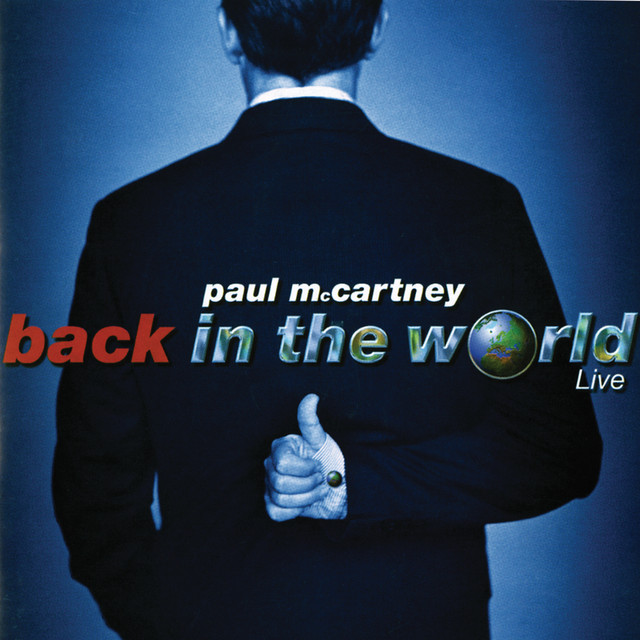 Not to be forgotten are the live renditions of “The End” that have been recorded by Paul and his band. First off, we have the “Golden Slumbers / Carry That Weight / The End” medley that was recorded in Toronto, Canada on December 7th, 1989 as contained on his albums “Tripping The Live Fantastic” and “Tripping The Live Fantastic: Highlights!” Then came the “Sgt. Pepper (reprise) / The End” medley recorded in April or May 2002 as included on his albums “Back In The US” and “Back In The World.” And then his “Sgt. Pepper (reprise) / The End” medley recorded in July 2009 at Citi Field in New York City as contained on the album “Good Evening New York City.” Not to be forgotten are the live renditions of “The End” that have been recorded by Paul and his band. First off, we have the “Golden Slumbers / Carry That Weight / The End” medley that was recorded in Toronto, Canada on December 7th, 1989 as contained on his albums “Tripping The Live Fantastic” and “Tripping The Live Fantastic: Highlights!” Then came the “Sgt. Pepper (reprise) / The End” medley recorded in April or May 2002 as included on his albums “Back In The US” and “Back In The World.” And then his “Sgt. Pepper (reprise) / The End” medley recorded in July 2009 at Citi Field in New York City as contained on the album “Good Evening New York City.”
Song Structure and Style
Being that "The End" is a make-shift track intended as a conclusion to the long "Abbey Road" medley, it doesn't have a concise repeating structure as most Beatles songs do. However, for the sake of completeness, its structure amounts to 'intro one/ intro two/ solo/ conclusion' (or aabc).
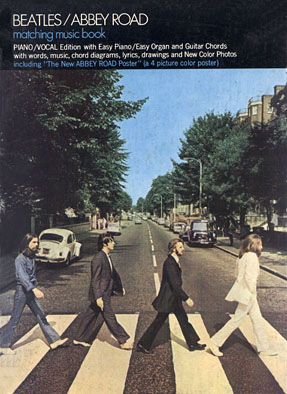 The first intro is six measures long and actually begins on what would be the 'four beat' of the previous measure if there was one. Actually, to the listener, this track begins on the anticipated 'three beat' of the fourth measure of the conclusion to the previous track “Carry That Weight.” This abrupt edit gives the illusion of both songs being recorded as one, credit to be given to George Martin and the engineering staff in pulling this off seamlessly, as well as Paul's meticulous planning. The first intro is six measures long and actually begins on what would be the 'four beat' of the previous measure if there was one. Actually, to the listener, this track begins on the anticipated 'three beat' of the fourth measure of the conclusion to the previous track “Carry That Weight.” This abrupt edit gives the illusion of both songs being recorded as one, credit to be given to George Martin and the engineering staff in pulling this off seamlessly, as well as Paul's meticulous planning.
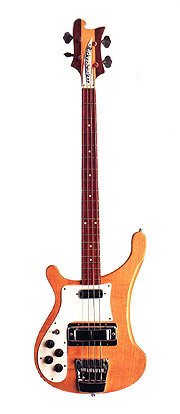 Right from the beginning of this intro, we hear George and John's electric guitars, along with Paul's bass and Ringo's drums, playing vibrantly on selected quarter beats with two sets of rising notes. Ringo focuses on toms for the first two measures, crashing the cymbals when the quarter beats are played by his band mates. He then, for the third and fourth measure, switches to a regular 4/4 drum beat pattern while riding on the cymbal, the third measure beginning on an anticipated beat. George, John and Paul then play a harmonized rising figure on their guitars and bass until it falls downward and settles on an anticipated downbeat for the fifth measure. The guitars all fall away at this point, Ringo filling out measures five and six with a quick but suitable drum solo that focuses on his toms. Right from the beginning of this intro, we hear George and John's electric guitars, along with Paul's bass and Ringo's drums, playing vibrantly on selected quarter beats with two sets of rising notes. Ringo focuses on toms for the first two measures, crashing the cymbals when the quarter beats are played by his band mates. He then, for the third and fourth measure, switches to a regular 4/4 drum beat pattern while riding on the cymbal, the third measure beginning on an anticipated beat. George, John and Paul then play a harmonized rising figure on their guitars and bass until it falls downward and settles on an anticipated downbeat for the fifth measure. The guitars all fall away at this point, Ringo filling out measures five and six with a quick but suitable drum solo that focuses on his toms.
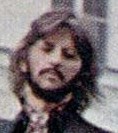 The second intro then begins, which repeats the exact pattern we just heard instrumentally. The only difference here is that Paul's double-tracked vocals now appear, screaming the lyrics, “Oh yeah, all right / Are you gonna be in my dreams / tonight?” This time, instead of playing just a two measure drum solo as in the previous intro, Ringo plays an impressive eight measure solo which continues to focus on the toms but with a pulsing kick drum beat that pounds out a steady eighth-note beat throughout. Together with the first four measures of guitars and vocals, this solo combines to make this second intro twelve measures long. The second intro then begins, which repeats the exact pattern we just heard instrumentally. The only difference here is that Paul's double-tracked vocals now appear, screaming the lyrics, “Oh yeah, all right / Are you gonna be in my dreams / tonight?” This time, instead of playing just a two measure drum solo as in the previous intro, Ringo plays an impressive eight measure solo which continues to focus on the toms but with a pulsing kick drum beat that pounds out a steady eighth-note beat throughout. Together with the first four measures of guitars and vocals, this solo combines to make this second intro twelve measures long.
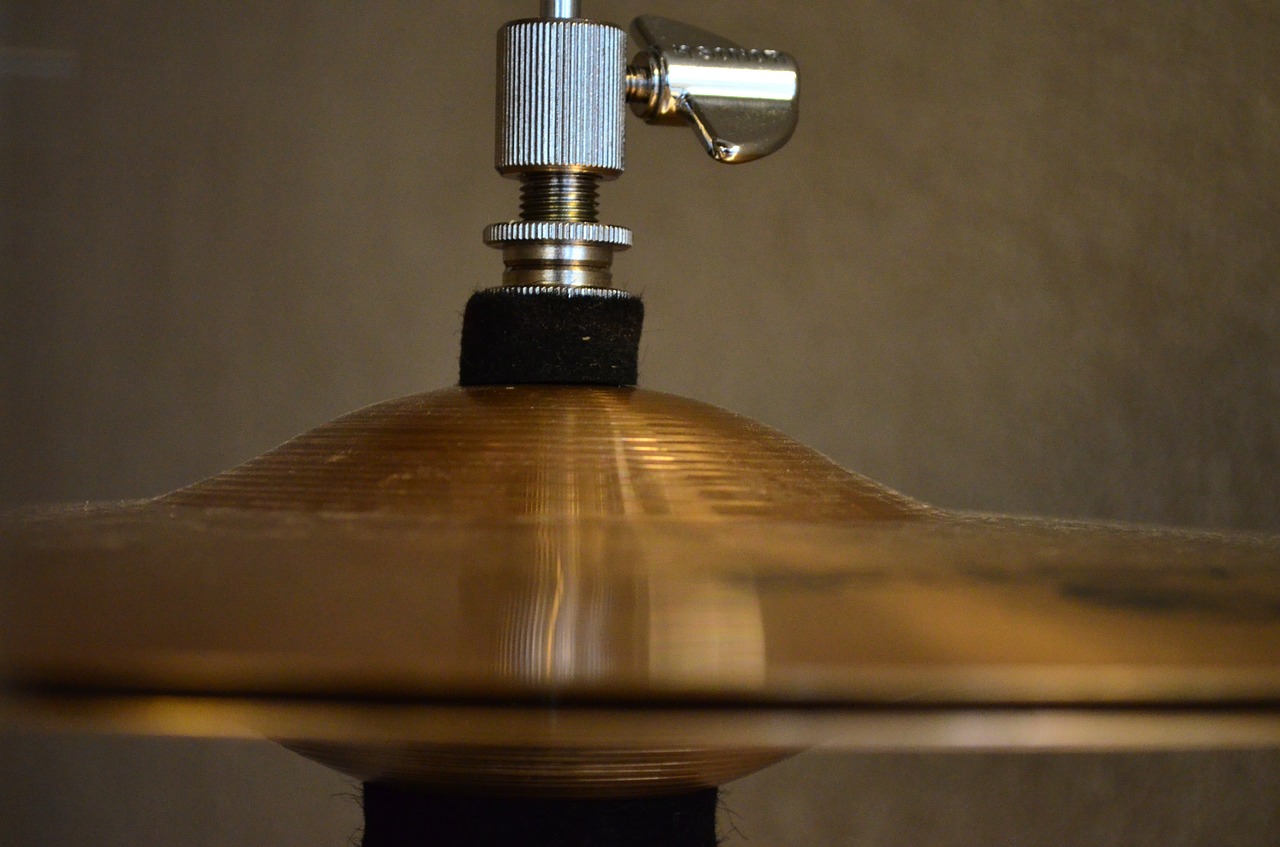 This moves into the solo section of the track, which totals 28 measures in length. All 28 measures contain the rhythm track of George and John playing two sets of dissonant chords on their guitars repeatedly while Paul and Ringo plod away on their instruments with a steady rhythm backdrop. Ringo starts off riding on his closed hi-hat with a strategic open hi-hat accent pattern for the first four measures but then quickly abandons this to simply leaving the hi-hat open for the rest of this section, increasing the sizzling cymbals' intensity as the measures proceed. Starting at measure five, Paul adds his multi-tracked backing vocals repeating “love you / love you,” these repeating throughout the full amount of measures from this point forward. This moves into the solo section of the track, which totals 28 measures in length. All 28 measures contain the rhythm track of George and John playing two sets of dissonant chords on their guitars repeatedly while Paul and Ringo plod away on their instruments with a steady rhythm backdrop. Ringo starts off riding on his closed hi-hat with a strategic open hi-hat accent pattern for the first four measures but then quickly abandons this to simply leaving the hi-hat open for the rest of this section, increasing the sizzling cymbals' intensity as the measures proceed. Starting at measure five, Paul adds his multi-tracked backing vocals repeating “love you / love you,” these repeating throughout the full amount of measures from this point forward.
Then, starting with measure eleven, Paul, George and John, in that order, play guitar solo segments that juxtapose and compliment each other. Each soloist plays three two-measure solos, Paul's being heard in measures 11 / 12, 17 / 18 and 23 / 24, George's in measures 13 / 14, 19 / 20 and 25 / 26, and John's in measures 15 / 16, 21 / 22 and 27 / 28.
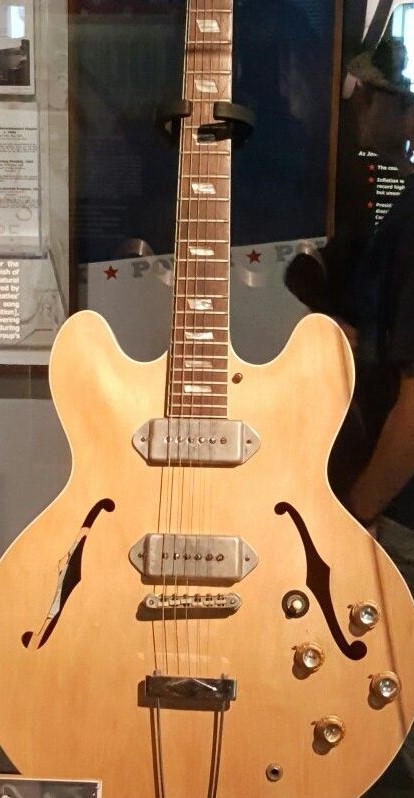 After John's triplet-like final guitar solo segment, everybody stops on a dime for the 'conclusion' section of the track, which is a total of sixteen measures in length. All that is heard after the smoke clears from the solo section is Paul's piano which is simply playing a high triad that is repeated on the sixteenth-note beats. The third measure adds Paul's final vocal line “And in the end...,” which is followed by a single piano note on the downbeat of the fourth measure and the addition of a quick echoed guitar phrase. As the piano chords begin to change in measure five, Paul and newly arriving backing vocalists sing “the love you take” while a similar piano note and guitar phrase is added in measure six. After John's triplet-like final guitar solo segment, everybody stops on a dime for the 'conclusion' section of the track, which is a total of sixteen measures in length. All that is heard after the smoke clears from the solo section is Paul's piano which is simply playing a high triad that is repeated on the sixteenth-note beats. The third measure adds Paul's final vocal line “And in the end...,” which is followed by a single piano note on the downbeat of the fourth measure and the addition of a quick echoed guitar phrase. As the piano chords begin to change in measure five, Paul and newly arriving backing vocalists sing “the love you take” while a similar piano note and guitar phrase is added in measure six.
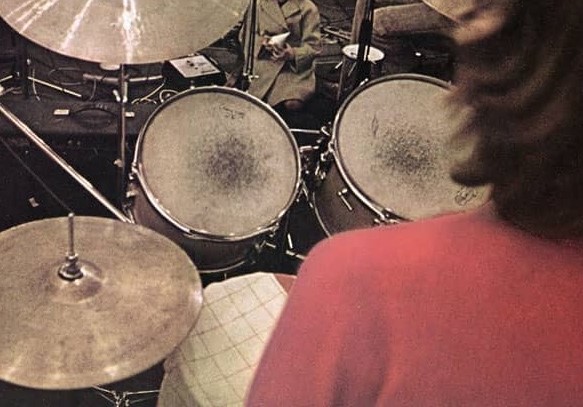 The entire song is in 4/4 time with the exception of measure seven of the conclusion, which is in 6/8 time. This measure is driven by the descending harmonized phrase “is equal to the” while the added single piano notes now descend with the melody line. Measure eight now ends the staccato piano triads which are replaced by flowing piano chords and lush orchestration as the harmonized word “love” is heard. As the orchestral score plays its descending chords, Paul sings the final lyric “you make” as Ringo's drums kick in again with a simple drum fill as a segue to the remaining four measures of the conclusion. These measures include the swelling orchestral score, bass, a tasty guitar line, harmonized “aah” vocals, and a simple drum beat played at half speed to what was heard in the rest of the song. Ringo adds drum fills in measures fourteen and fifteen as the final ringing orchestral chord of measure sixteen brings the “Abbey Road” medley to an impressive conclusion. The entire song is in 4/4 time with the exception of measure seven of the conclusion, which is in 6/8 time. This measure is driven by the descending harmonized phrase “is equal to the” while the added single piano notes now descend with the melody line. Measure eight now ends the staccato piano triads which are replaced by flowing piano chords and lush orchestration as the harmonized word “love” is heard. As the orchestral score plays its descending chords, Paul sings the final lyric “you make” as Ringo's drums kick in again with a simple drum fill as a segue to the remaining four measures of the conclusion. These measures include the swelling orchestral score, bass, a tasty guitar line, harmonized “aah” vocals, and a simple drum beat played at half speed to what was heard in the rest of the song. Ringo adds drum fills in measures fourteen and fifteen as the final ringing orchestral chord of measure sixteen brings the “Abbey Road” medley to an impressive conclusion.
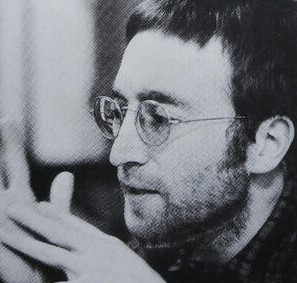 “The End” may have been Paul's brainchild, but all four Beatles showed themselves enthusiastic in cooperating to make a good track. With a sense of pride, when interviewed in 1970, the usually-complaining John Lennon even exclaimed: “There's a nice little bit I played; they had it on the back of 'Abbey Road.' Paul gave us each a piece. There is a little break where Paul plays, George plays, and I play...One of those where it stops, where it suddenly goes 'Boom, boom, boom' on the drums, and then we all take it in turns to play. I'm the third one on that. I have a definitive style of playing. I've always had. They call George the invisible singer. Well, I'm the invisible guitarist!” And with Ringo's intricate drum work and George's incredible guitar solo interjections, all four band members shine like never before to make what became a final vibrant performance on the last recorded Beatles album. “The End” may have been Paul's brainchild, but all four Beatles showed themselves enthusiastic in cooperating to make a good track. With a sense of pride, when interviewed in 1970, the usually-complaining John Lennon even exclaimed: “There's a nice little bit I played; they had it on the back of 'Abbey Road.' Paul gave us each a piece. There is a little break where Paul plays, George plays, and I play...One of those where it stops, where it suddenly goes 'Boom, boom, boom' on the drums, and then we all take it in turns to play. I'm the third one on that. I have a definitive style of playing. I've always had. They call George the invisible singer. Well, I'm the invisible guitarist!” And with Ringo's intricate drum work and George's incredible guitar solo interjections, all four band members shine like never before to make what became a final vibrant performance on the last recorded Beatles album.
American Releases
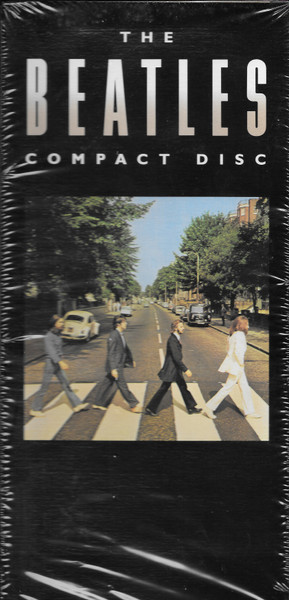 On October 1st, 1969, the final recorded Beatles album was released in America, simply titled "Abbey Road." "The End" is the tenth track on side two of the album and the eighth and final named track of the long medley that comprises the majority of the second side of the album. The "Abbey Road" album took only three weeks to jump into the top spot on the Billboard album chart, raking in a total of eleven weeks in the #1 position. The album first appeared on compact disc on October 10th, 1987, and then as a remastered release on September 9th, 2009. On September 27th, 2019, a 50th Anniversary edition of the album was released on CD and 180-gram vinyl, not to mention an opaque green vinyl edition coming out on October 10th, 2025 as an exclusive release available only at Target Department Stores. On October 1st, 1969, the final recorded Beatles album was released in America, simply titled "Abbey Road." "The End" is the tenth track on side two of the album and the eighth and final named track of the long medley that comprises the majority of the second side of the album. The "Abbey Road" album took only three weeks to jump into the top spot on the Billboard album chart, raking in a total of eleven weeks in the #1 position. The album first appeared on compact disc on October 10th, 1987, and then as a remastered release on September 9th, 2009. On September 27th, 2019, a 50th Anniversary edition of the album was released on CD and 180-gram vinyl, not to mention an opaque green vinyl edition coming out on October 10th, 2025 as an exclusive release available only at Target Department Stores.
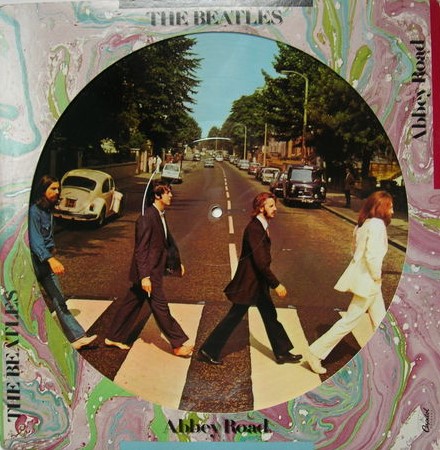 Sometime in 1978, Capitol released the “Abbey Road” album as a picture disc. Side one had the iconic front cover while side two contained a close-up of the wall photo of the back cover minus the song title listings. This release quickly went out of print but was re-released on 180-gram vinyl on September 27th, 2019 to commemorate its 50th Anniversary. Sometime in 1978, Capitol released the “Abbey Road” album as a picture disc. Side one had the iconic front cover while side two contained a close-up of the wall photo of the back cover minus the song title listings. This release quickly went out of print but was re-released on 180-gram vinyl on September 27th, 2019 to commemorate its 50th Anniversary.
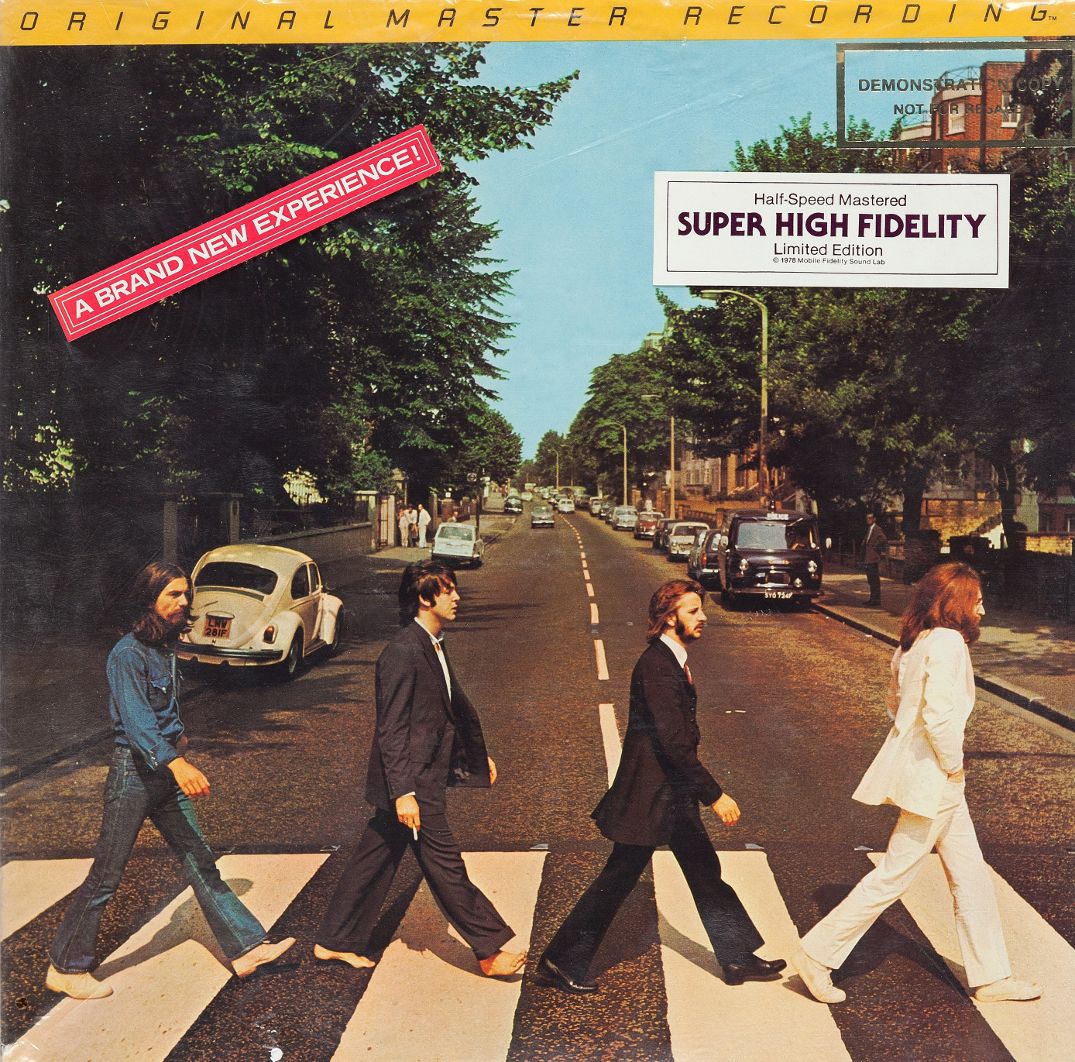 An interesting US vinyl edition of “Abbey Road” was released on December 28th, 1979, this being manufactured by Mobile Fidelity Sound Lab in Chatsworth, California as the first Beatles installment in their "Original Master Recording" series. Their practice was to prepare a new master utilizing half-speed mastering technology from the original master tapes, in this case using the leased sub-master from Capitol Records. Stickers on the shrinkwrap proclaimed this album as being “A Brand New Experience,” which proved to be the case. This version of the album sounded superior to all previous British and American pressings at that time. Unfortunately, this excellent edition of “Abbey Road” was only available for a short time and is quite collectible today. An interesting US vinyl edition of “Abbey Road” was released on December 28th, 1979, this being manufactured by Mobile Fidelity Sound Lab in Chatsworth, California as the first Beatles installment in their "Original Master Recording" series. Their practice was to prepare a new master utilizing half-speed mastering technology from the original master tapes, in this case using the leased sub-master from Capitol Records. Stickers on the shrinkwrap proclaimed this album as being “A Brand New Experience,” which proved to be the case. This version of the album sounded superior to all previous British and American pressings at that time. Unfortunately, this excellent edition of “Abbey Road” was only available for a short time and is quite collectible today.
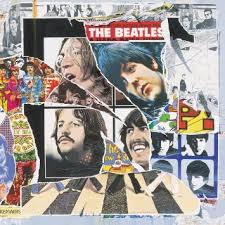 October 28th, 1996 was the release date for the compilation album “Anthology 3,” the third and final release of the Anthology series. An interesting mix of “The End” concluded this set, which began at the drum solo section of the song, complete with the never-before-heard lead guitar rehearsal and tambourine overdub, moving into the rest of the song with the guitar solos and orchestra overdub high in the mix. As with the first two “Anthology” sets, it reached #1 on the Billboard album chart. October 28th, 1996 was the release date for the compilation album “Anthology 3,” the third and final release of the Anthology series. An interesting mix of “The End” concluded this set, which began at the drum solo section of the song, complete with the never-before-heard lead guitar rehearsal and tambourine overdub, moving into the rest of the song with the guitar solos and orchestra overdub high in the mix. As with the first two “Anthology” sets, it reached #1 on the Billboard album chart.
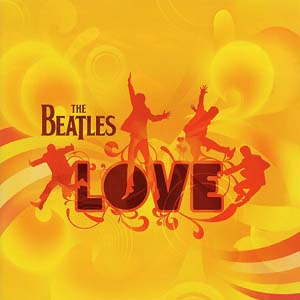 November 20th, 2006 was the release date for the above mentioned album “Beatles Love,” which was put together exclusively for the Cirque du Soleil show of the same name. Elements heard in “The End,” namely, the drum solo and the lead guitar battle, are heard in the track “Get Back” on this special compilation package. This successful album peaked at #4 on the Billboard album chart. November 20th, 2006 was the release date for the above mentioned album “Beatles Love,” which was put together exclusively for the Cirque du Soleil show of the same name. Elements heard in “The End,” namely, the drum solo and the lead guitar battle, are heard in the track “Get Back” on this special compilation package. This successful album peaked at #4 on the Billboard album chart.
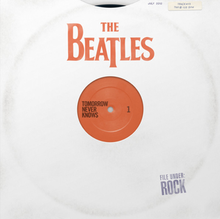 On July 24th, 2012, the iTunes Store, in partnership with EMI Records, released a Beatles compilation album entitled "Tomorrow Never Knows," the purpose of which was to highlight the group's influence on the history of rock music. The album had the approval of Paul and Ringo, as well as the board of directors for the estates of John and George, and was successful enough to peak at #24 on the Billboard album chart. The above mentioned "Anthology 3" version of "The End" was chosen for this release. On July 24th, 2012, the iTunes Store, in partnership with EMI Records, released a Beatles compilation album entitled "Tomorrow Never Knows," the purpose of which was to highlight the group's influence on the history of rock music. The album had the approval of Paul and Ringo, as well as the board of directors for the estates of John and George, and was successful enough to peak at #24 on the Billboard album chart. The above mentioned "Anthology 3" version of "The End" was chosen for this release.
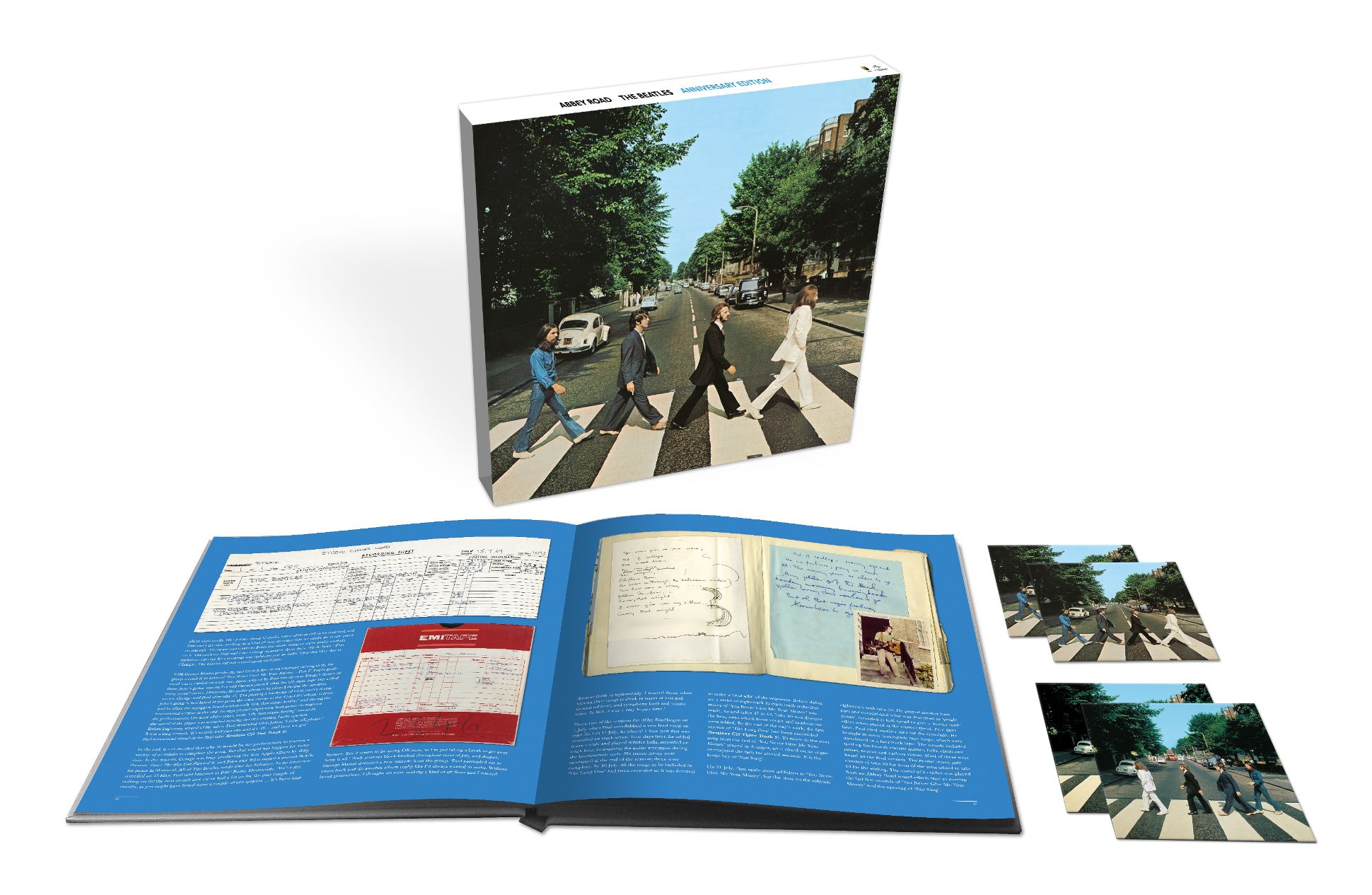 On September 27th, 2019, various other editions of "Abbey Road" were released in connection with its 50th Anniverary. The "Deluxe" 2CD edition contains the new Giles Martin of the entire album as well as the never-before-heard "take three" of the rhythm track of "The End" as recorded on July 23rd, 1969. The "Triple Album" vinyl set and the "Super Deluxe" 3CD + Blu-ray edition contain these tracks as well, along with the trial edit and mix of the entire "Abbey Road" medley as created on July 30th, 1969. On September 27th, 2019, various other editions of "Abbey Road" were released in connection with its 50th Anniverary. The "Deluxe" 2CD edition contains the new Giles Martin of the entire album as well as the never-before-heard "take three" of the rhythm track of "The End" as recorded on July 23rd, 1969. The "Triple Album" vinyl set and the "Super Deluxe" 3CD + Blu-ray edition contain these tracks as well, along with the trial edit and mix of the entire "Abbey Road" medley as created on July 30th, 1969.
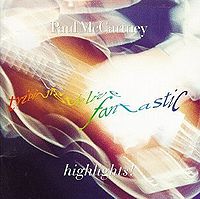 November 5th, 1990, was the release date for Paul's successful double-CD “Tripping The Live Fantastic,” which featured a live rendition of the final three segments of the “Abbey Road” medley, namely, “Golden Slumbers,” “Carry That Weight” and “The End.” For those who didn't want to buy the full double-CD package, a single live disc entitled “Tripping The Live Fantastic: Highlights!” was released a week later, on November 12th, 1990. This also contained the same live version of “The End.” Although the original album peaked much higher on the Billboard album chart (#26), the “Highlights!” single disc eventually went platinum despite its weak chart showing at #141. November 5th, 1990, was the release date for Paul's successful double-CD “Tripping The Live Fantastic,” which featured a live rendition of the final three segments of the “Abbey Road” medley, namely, “Golden Slumbers,” “Carry That Weight” and “The End.” For those who didn't want to buy the full double-CD package, a single live disc entitled “Tripping The Live Fantastic: Highlights!” was released a week later, on November 12th, 1990. This also contained the same live version of “The End.” Although the original album peaked much higher on the Billboard album chart (#26), the “Highlights!” single disc eventually went platinum despite its weak chart showing at #141.
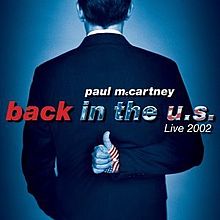 On November 1st, 2002, Paul's live album “Back In The US” was released in America featuring Paul's performance of “The End.” This, in fact, was a newly styled medley of “Sgt. Pepper (reprise)” which transcends into “The End” which thereby ends the album. This release went Double-Platinum and peaked at #2 on the Billboard album chart. On November 1st, 2002, Paul's live album “Back In The US” was released in America featuring Paul's performance of “The End.” This, in fact, was a newly styled medley of “Sgt. Pepper (reprise)” which transcends into “The End” which thereby ends the album. This release went Double-Platinum and peaked at #2 on the Billboard album chart.
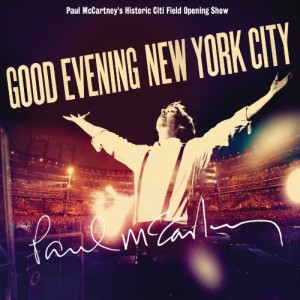 A similarly styled medley of “Sgt. Pepper (reprise)” and “The End” concluded Paul's live album “Good Evening New York City,” which was released on November 17th, 2009 and reached #16 on the Billboard album chart. A similarly styled medley of “Sgt. Pepper (reprise)” and “The End” concluded Paul's live album “Good Evening New York City,” which was released on November 17th, 2009 and reached #16 on the Billboard album chart.
Live Performances
The Beatles never performed the song live but, as mentioned above, Paul and his new touring band thought to include "Golden Slumbers," "Carry That Weight" and "The End" on his "World Tour" well after the breakup of The Beatles. This tour stretched from September 26th, 1989 (Drammen, Norway) to July 29th, 1990 (Chicago, Illinois). The three-song medley made for a suitable ending song on this tour, his first since his Wings UK Tour of 1979.
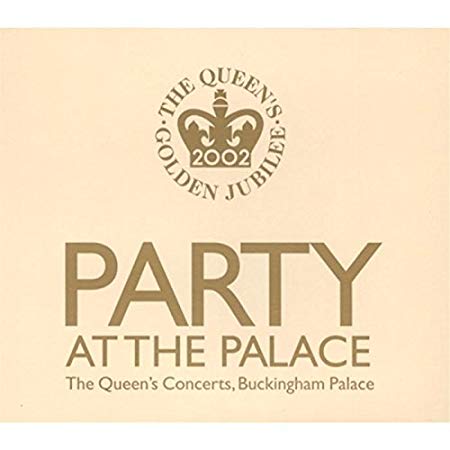 Paul then included the above-described “Sgt. Pepper (reprise) / The End” medley on his “Driving World” tour of 2002, which spanned from April 1st (Oakland, California) to November 18th (Osaka, Japan). It was during this tour that Paul played this medley at the "Party At The Palace" event during the "Golden Jubilee Of Queen Elizabeth II" in London on June 3rd, 2002, the Queen herself being in attendance. His 2003 “Back In The World” tour also featured this medley, this tour starting on March 25th (Paris, France) and ending on June 1st (Liverpool, England). Paul continued to end his shows with this medley during his “2004 Summer Tour,” which spanned from May 25th (Gijon, Spain) to June 26th (Pilton, England) of that year. His “The 'US' Tour” of 2005 continued the use of the medley as well, this tour starting on September 16th (Miami, Florida) and ending on November 30th (Los Angeles, California) of that year. Paul then included the above-described “Sgt. Pepper (reprise) / The End” medley on his “Driving World” tour of 2002, which spanned from April 1st (Oakland, California) to November 18th (Osaka, Japan). It was during this tour that Paul played this medley at the "Party At The Palace" event during the "Golden Jubilee Of Queen Elizabeth II" in London on June 3rd, 2002, the Queen herself being in attendance. His 2003 “Back In The World” tour also featured this medley, this tour starting on March 25th (Paris, France) and ending on June 1st (Liverpool, England). Paul continued to end his shows with this medley during his “2004 Summer Tour,” which spanned from May 25th (Gijon, Spain) to June 26th (Pilton, England) of that year. His “The 'US' Tour” of 2005 continued the use of the medley as well, this tour starting on September 16th (Miami, Florida) and ending on November 30th (Los Angeles, California) of that year.
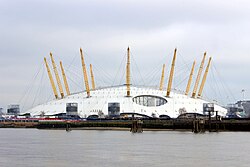 Paul's “Summer Live '09” Tour also featured the “Sgt. Pepper (reprise) / The End” medley, this tour stretching from July 11th (Halifax, Canada) to August 19th (Arlington, Texas) of that year. His “Good Evening Europe” tour of December 2009 also featured the medley, this spanning from December 2nd (Hamburg, Germany) to December 22nd (at the 02 Arena in London, England). Then came his “Up And Coming Tour,” which ran from March 28th, 2010 (Glendale, Arizona) to June 10th, 2011 (Las Vegas, Nevada). Paul's “Summer Live '09” Tour also featured the “Sgt. Pepper (reprise) / The End” medley, this tour stretching from July 11th (Halifax, Canada) to August 19th (Arlington, Texas) of that year. His “Good Evening Europe” tour of December 2009 also featured the medley, this spanning from December 2nd (Hamburg, Germany) to December 22nd (at the 02 Arena in London, England). Then came his “Up And Coming Tour,” which ran from March 28th, 2010 (Glendale, Arizona) to June 10th, 2011 (Las Vegas, Nevada).
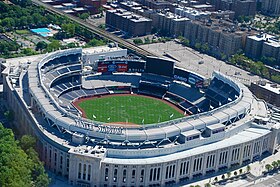 Then came Paul's “On The Run” tour of 2011 and 2012. As a final encore, he and his band resumed performing the full “Golden Slumbers,” “Carry That Weight” and “The End” medley, this tour stretching from July 11th, 2011 (at Yankee Stadium in New York City) to November 29th, 2012 (Edmonton, Canada). He did the same for his extensive “Out There” tour, which started on May 4th, 2013 (Belo Horizonte, Brazil) and finally concluded on October 22nd, 2015 (Buffalo, New York). This medley also concluded his shows for his “One On One” tour, stretching from April 13th, 2016 (Fresno, California) to December 16th, 2017 (Auckland, New Zealand), and then again during his "Freshen Up" tour, which ran from September 17th, 2018 (Quebec City, Canada) to July 13th, 2019 (Los Angeles, California). He concluded every date of his "Got Back" tour with the medley as well, this tour running from April 28th, 2022 (Spokane, Washington) to December 19th, 2024 (London, England), Bruce Springsteen joining in on guitar on the June 16th, 2022 show at MetLife Stadium in New Jersey. Then came Paul's “On The Run” tour of 2011 and 2012. As a final encore, he and his band resumed performing the full “Golden Slumbers,” “Carry That Weight” and “The End” medley, this tour stretching from July 11th, 2011 (at Yankee Stadium in New York City) to November 29th, 2012 (Edmonton, Canada). He did the same for his extensive “Out There” tour, which started on May 4th, 2013 (Belo Horizonte, Brazil) and finally concluded on October 22nd, 2015 (Buffalo, New York). This medley also concluded his shows for his “One On One” tour, stretching from April 13th, 2016 (Fresno, California) to December 16th, 2017 (Auckland, New Zealand), and then again during his "Freshen Up" tour, which ran from September 17th, 2018 (Quebec City, Canada) to July 13th, 2019 (Los Angeles, California). He concluded every date of his "Got Back" tour with the medley as well, this tour running from April 28th, 2022 (Spokane, Washington) to December 19th, 2024 (London, England), Bruce Springsteen joining in on guitar on the June 16th, 2022 show at MetLife Stadium in New Jersey.
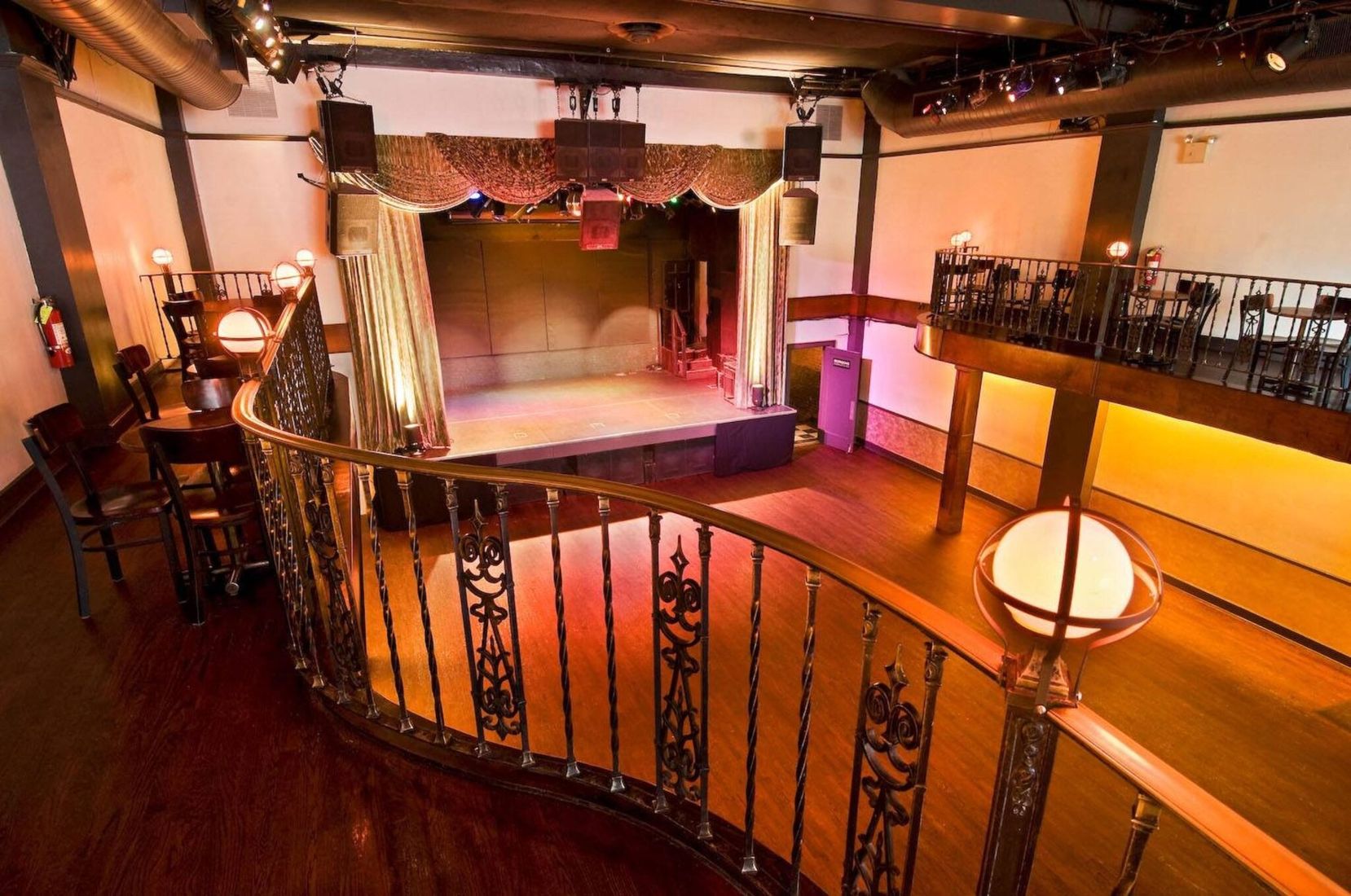 Interestingly, McCartney and his band played a surprise three night residency at the very quaint Bowery Ballroom in New York City on February 11th, 12th and 14th, 2025, this final night being Valentine's Day. The group performed the "Golden Slumbers" medley to close each of these shows at this 575-capacity Manhattan venue. Two days later, McCartney and his group gave a live television performance of the medley on February 16th, 2025 as the finale to the Saturday Night Live 50th Anniversary program. Interestingly, McCartney and his band played a surprise three night residency at the very quaint Bowery Ballroom in New York City on February 11th, 12th and 14th, 2025, this final night being Valentine's Day. The group performed the "Golden Slumbers" medley to close each of these shows at this 575-capacity Manhattan venue. Two days later, McCartney and his group gave a live television performance of the medley on February 16th, 2025 as the finale to the Saturday Night Live 50th Anniversary program.
Conclusion
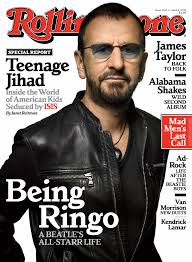 This quote from Ringo in the "Beatles Anthology" book concerning their recording of the "Abbey Road" album appears particularly fitting for their song "The End." This quote from Ringo in the "Beatles Anthology" book concerning their recording of the "Abbey Road" album appears particularly fitting for their song "The End."
"I think it shows on the record when we were excited: The track's exciting and it all comes together. It doesn't matter what we go through as individuals on the bullsh*t level; when it gets to the music you can see that it's really cool, and we had all put in one thousand per cent.”
Song Summary
“The End”
Written by: John Lennon / Paul McCartney
- Song Written: July to August 5, 1969
- Song Recorded: July 23, August 5, 7, 8, 15 & 18, 1969
- First US Release Date: October 1, 1969
- First US Album Release: Apple #SO-383 “Abbey Road”
- British Album Release: Apple #PCS 7088 “Abbey Road”
- US Single Release: n/a
- Highest Chart Position: n/a
- Length: 2:04
- Key: A major - C major
- Producer: George Martin
- Engineers: Geoff Emerick, Phil McDonald, John Kurlander, Alan Parsons
Instrumentation (most likely):
- Paul McCartney - Lead and Harmony Vocals, Bass (1964 Rickenbacker 4001 S), Piano (1905 Steinway Vertegrand), Lead Guitar (1962 Epiphone ES-230TD Casino)
- John Lennon - Lead and Rhythm Guitar (1965 Epiphone ES-230TD Casino)
- George Harrison - Lead and Rhythm Guitar (1968 Fender Rosewood Telecaster)
- Ringo Starr - Drums (1968 Ludwig Hollywood Maple)
- unknown - violin
- unknown - violin
- unknown - violin
- unknown - violin
- unknown - violin
- unknown - violin
- unknown - violin
- unknown - violin
- unknown - violin
- unknown - violin
- unknown - violin
- unknown - violin
- unknown - viola
- unknown - viola
- unknown - viola
- unknown - viola
- unknown - cello
- unknown - cello
- unknown - cello
- unknown - cello
- unknown - string bass
- unknown - horn
- unknown - horn
- unknown - horn
- unknown - horn
- unknown - trumpet
- unknown - trumpet
- unknown - trumpet
- unknown - trombone
- unknown - bass trombone
Written and compiled by Dave Rybaczewski
|
IF YOU WOULD LIKE TO MAKE A DONATION TO KEEP THIS WEBSITE UP AND RUNNING, PLEASE CLICK BELOW!
Sign Up Below for our MONTHLY BEATLES TRIVIA QUIZ!
|